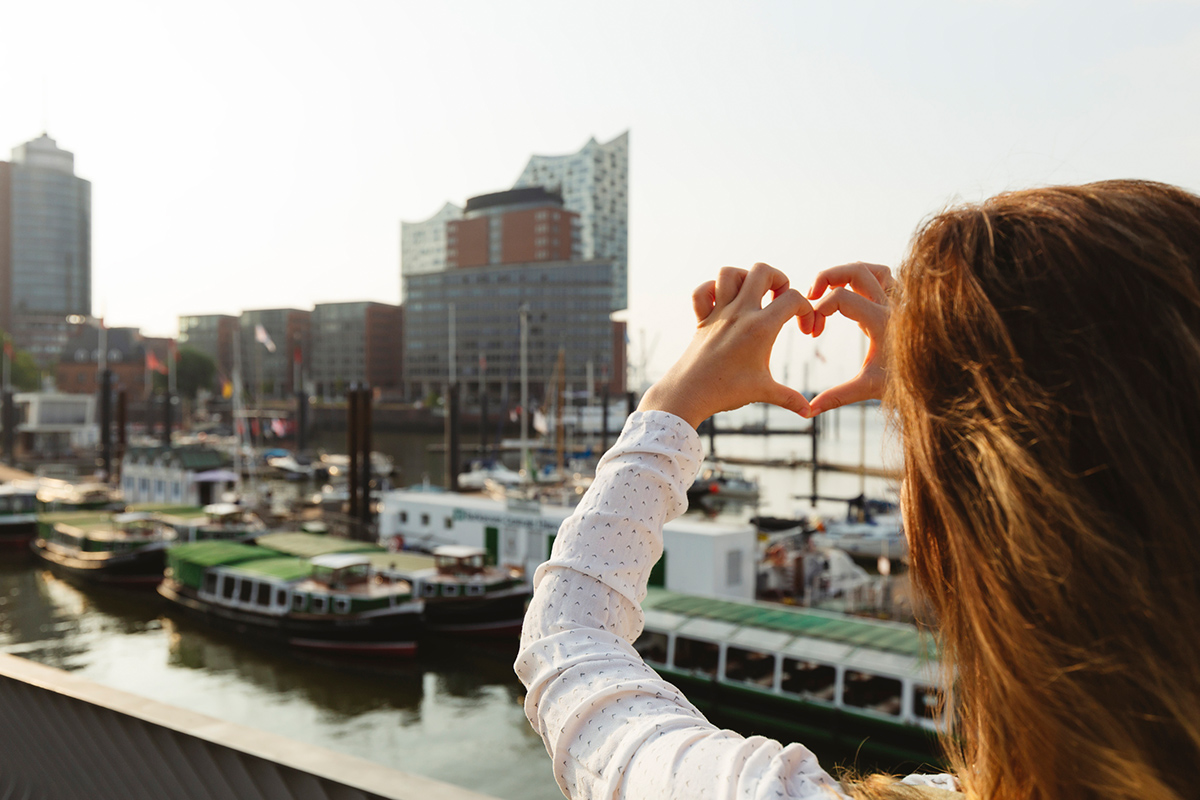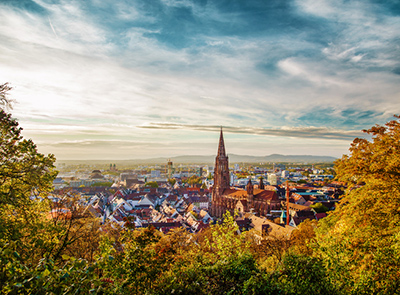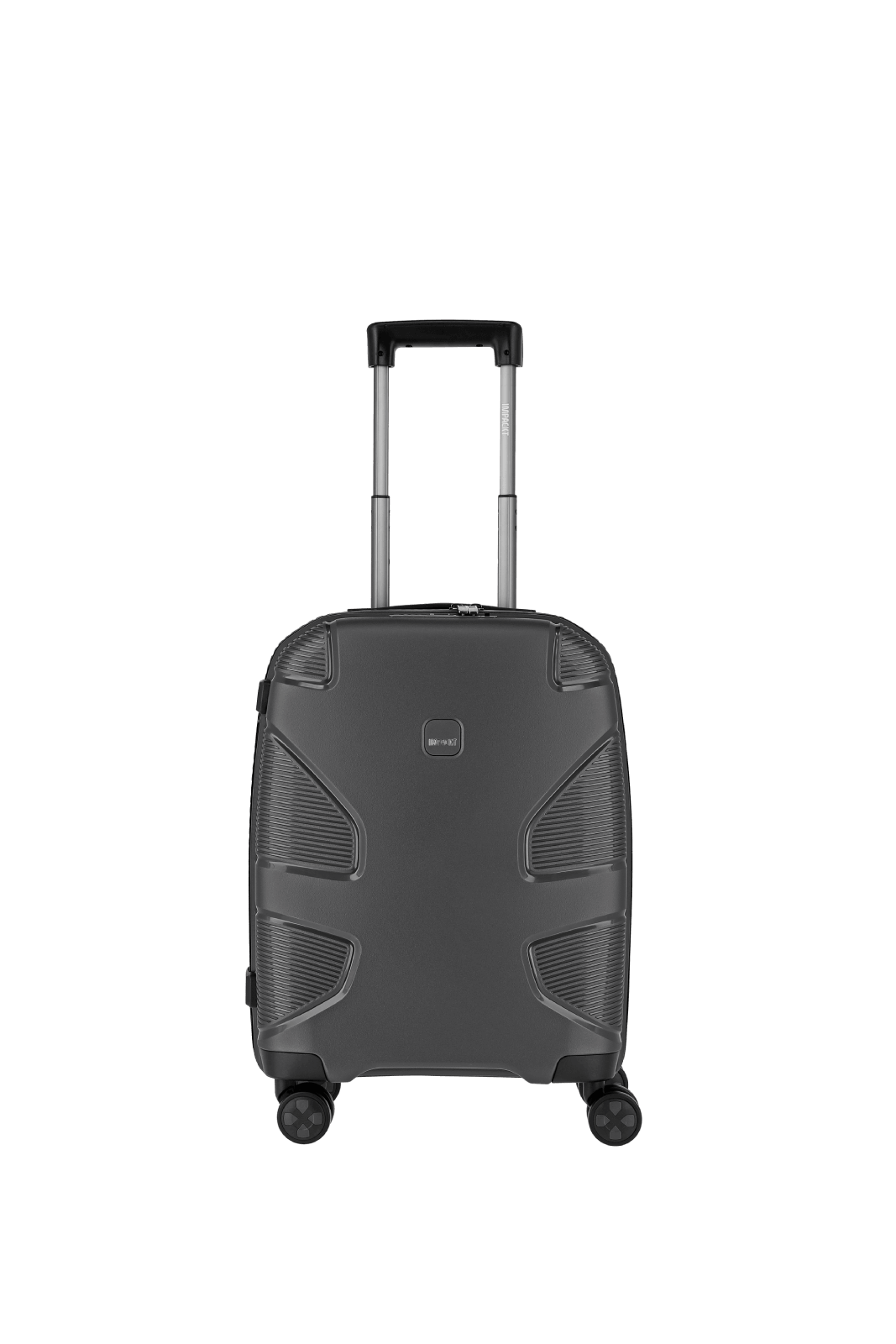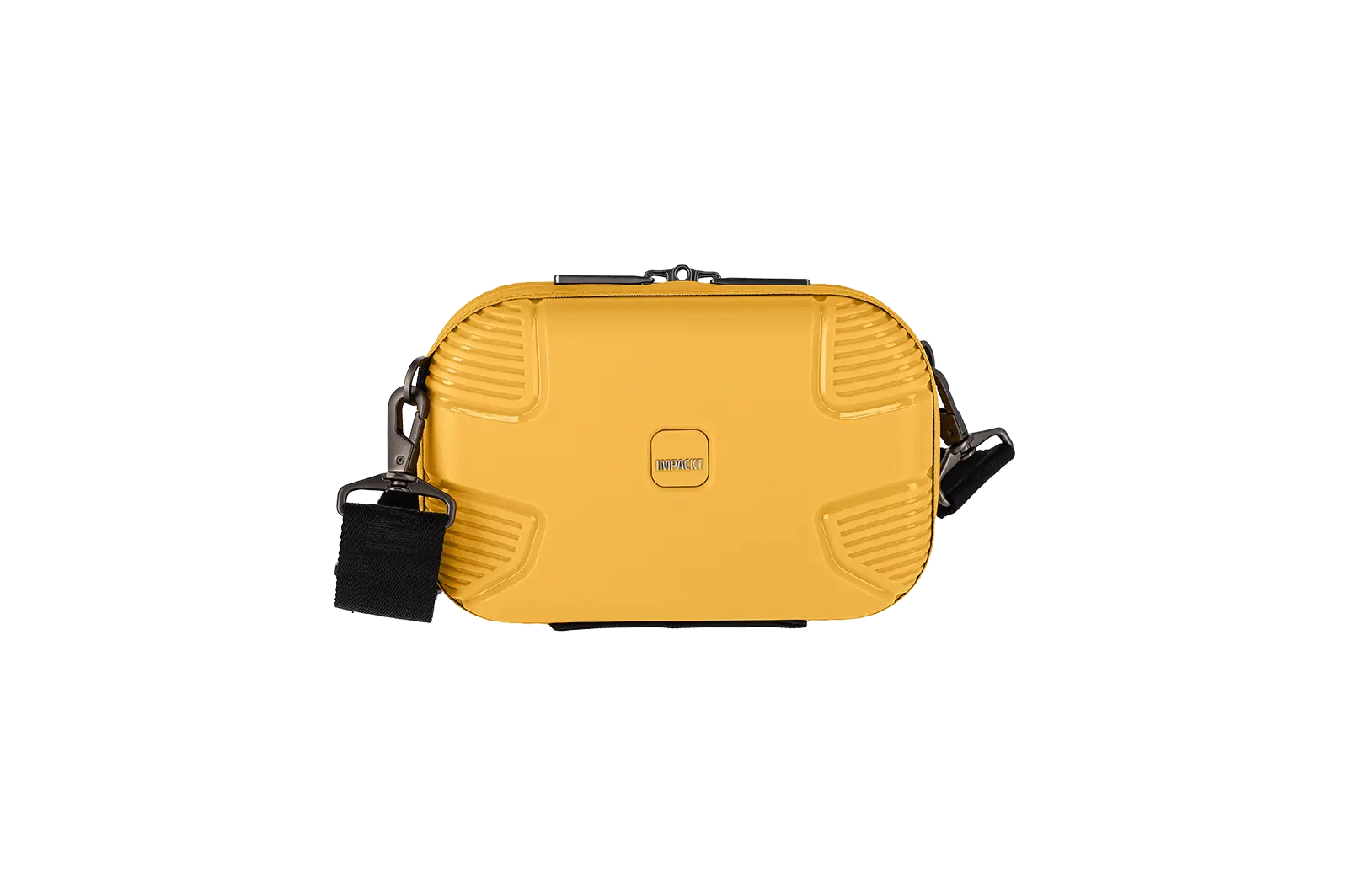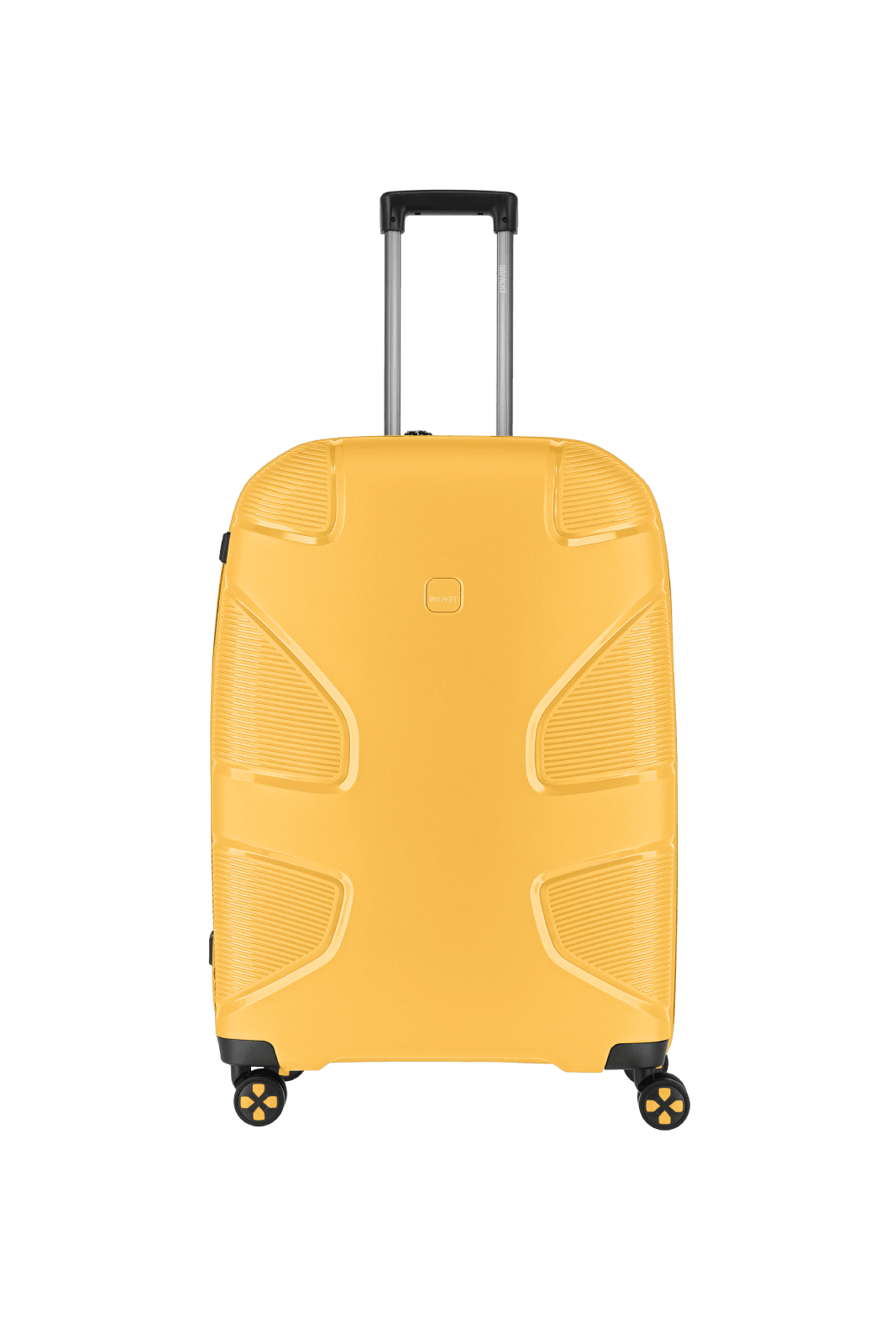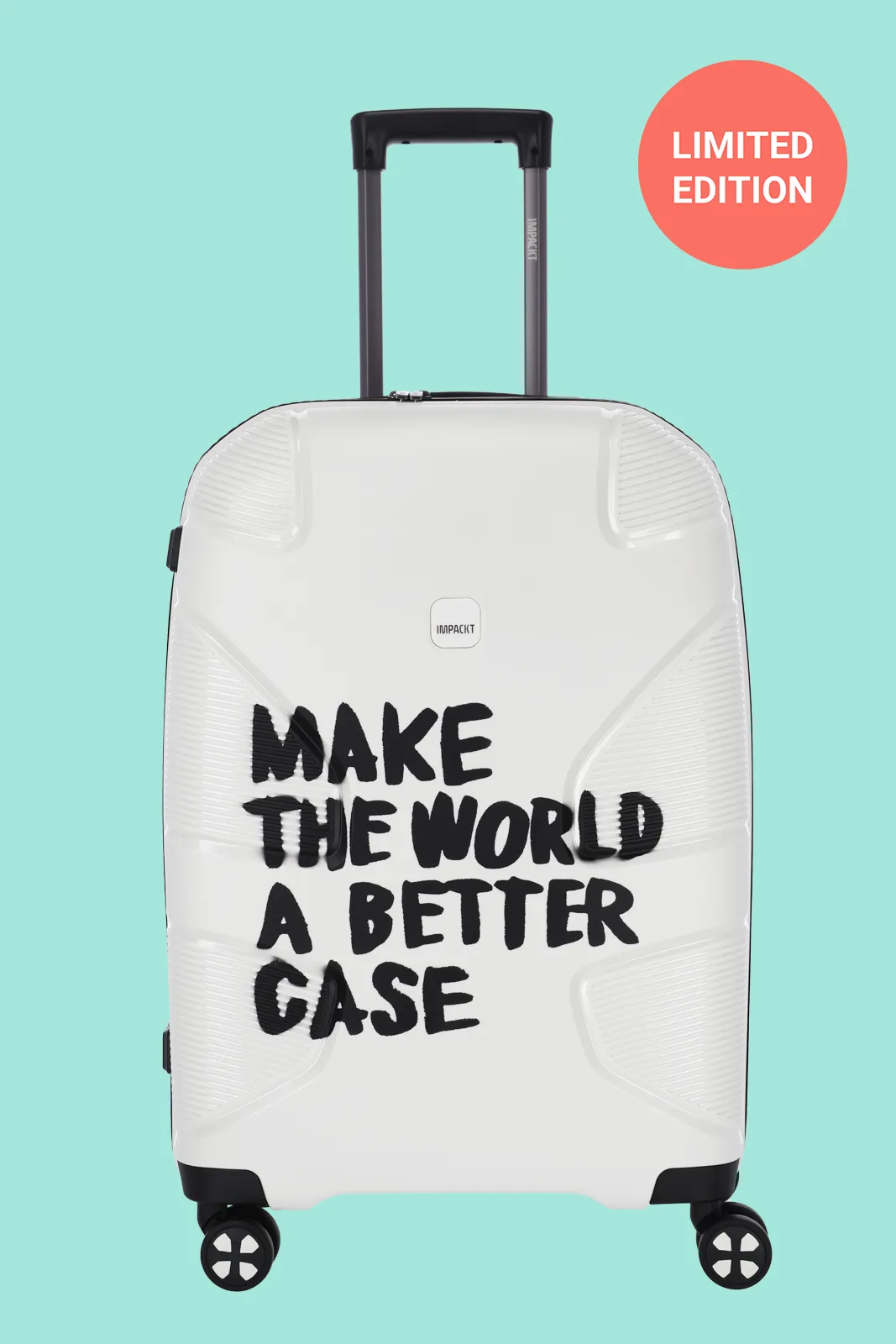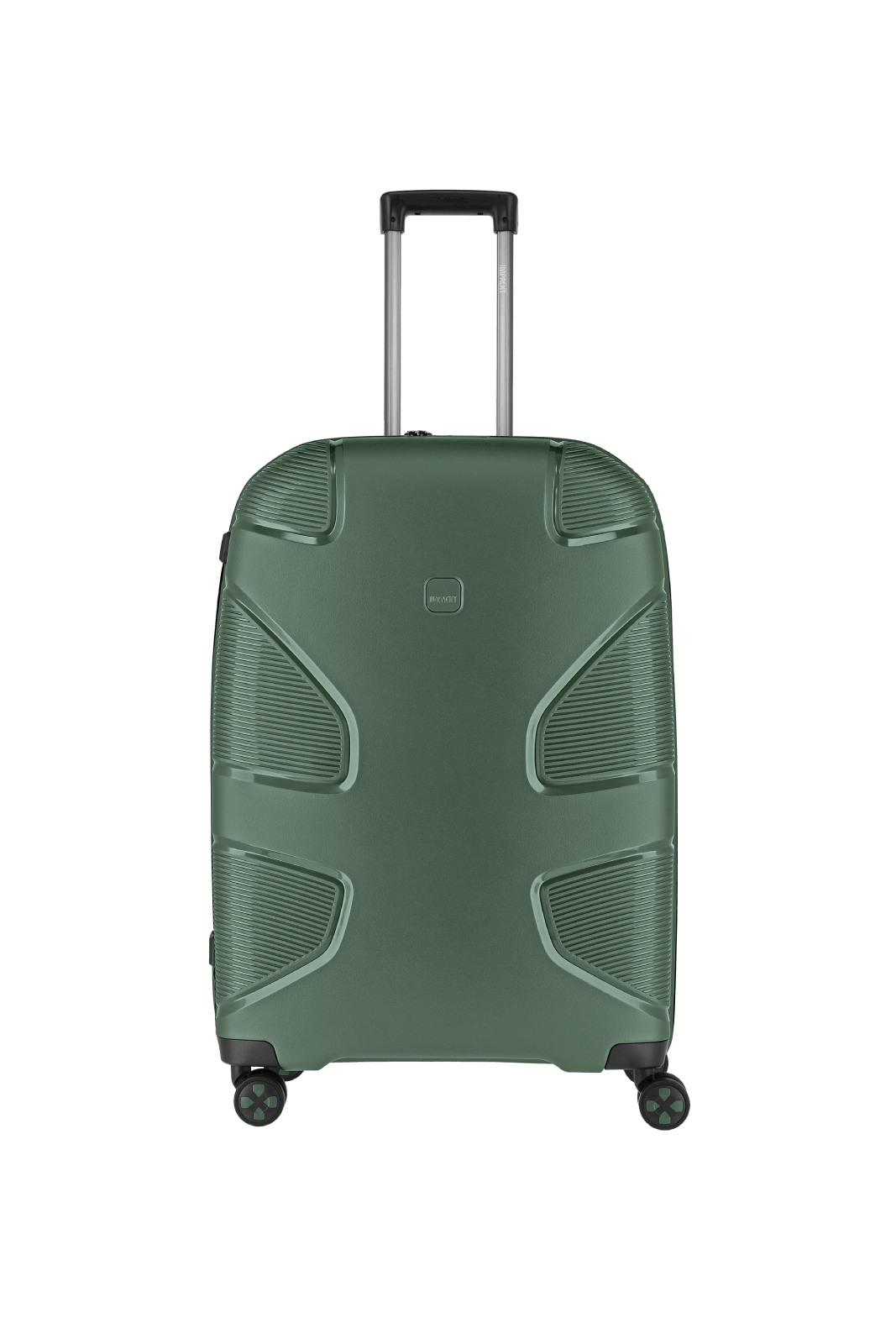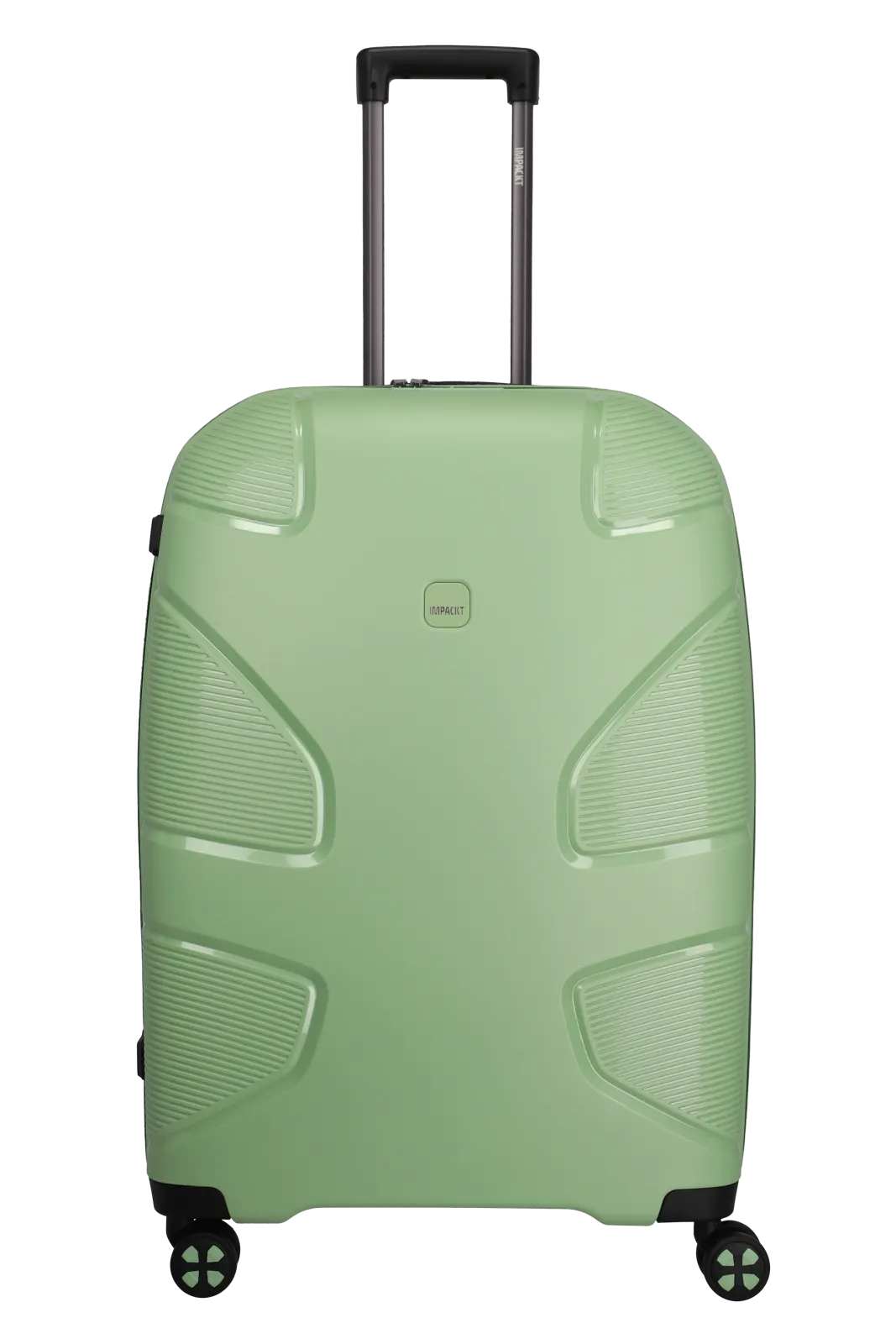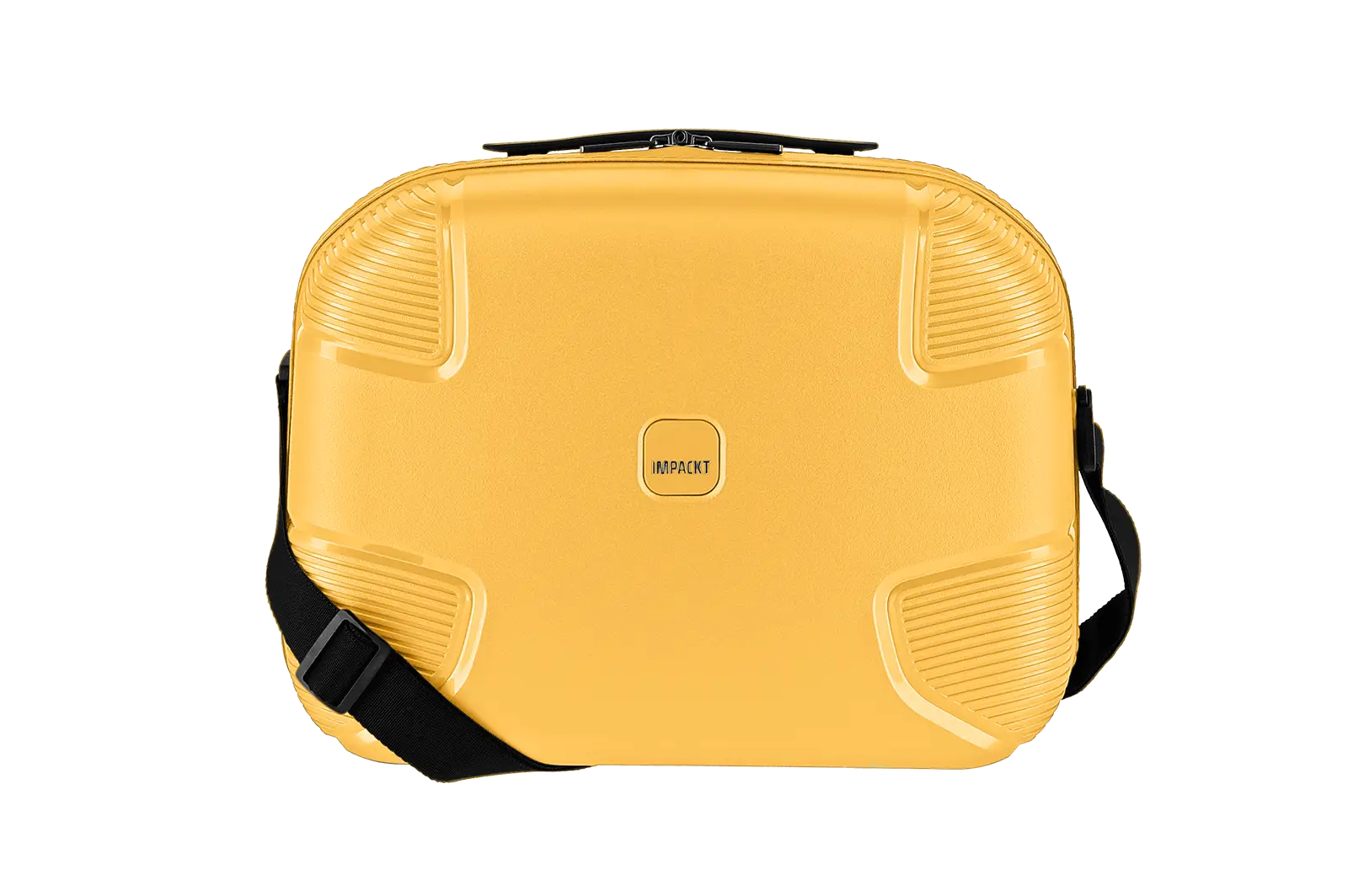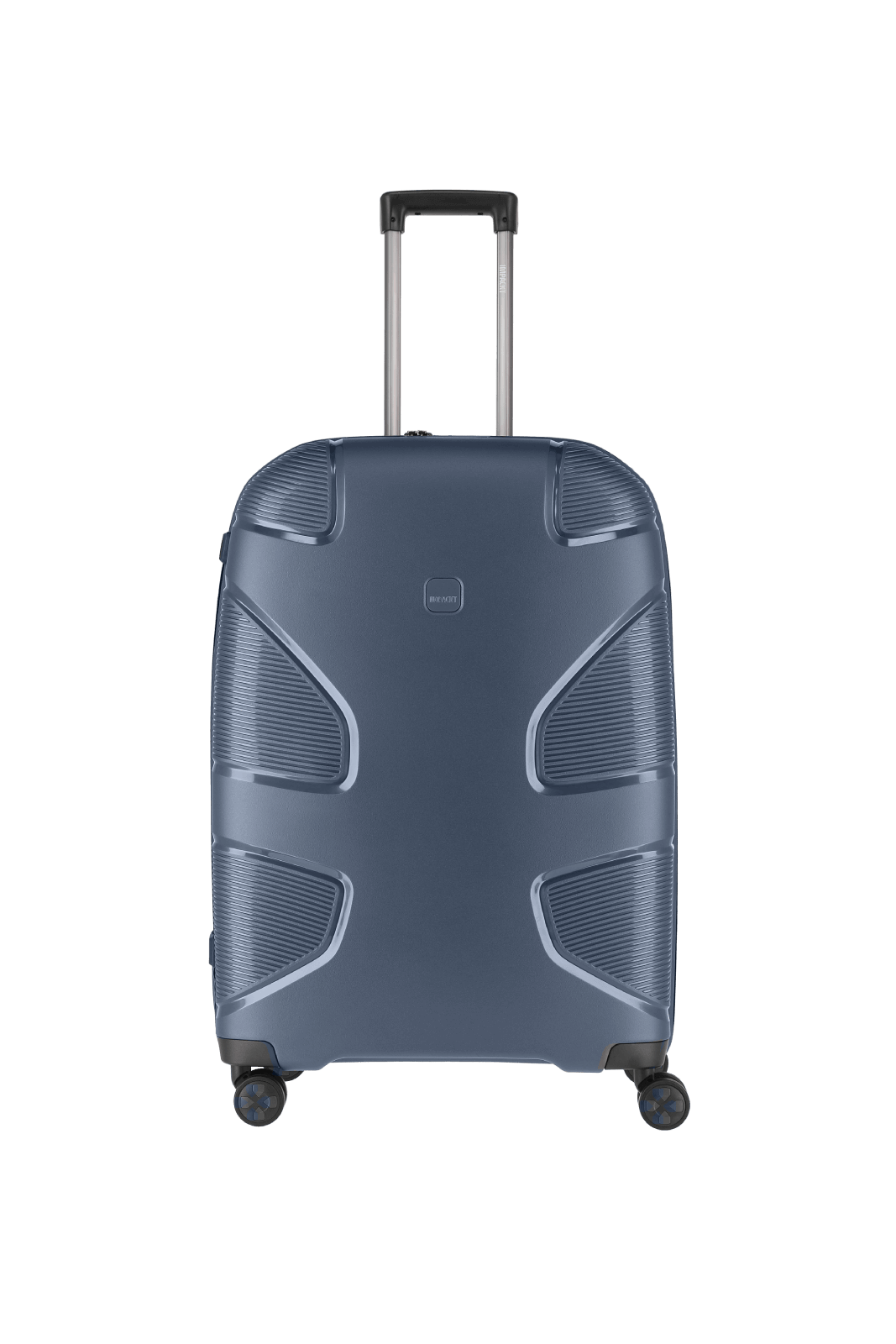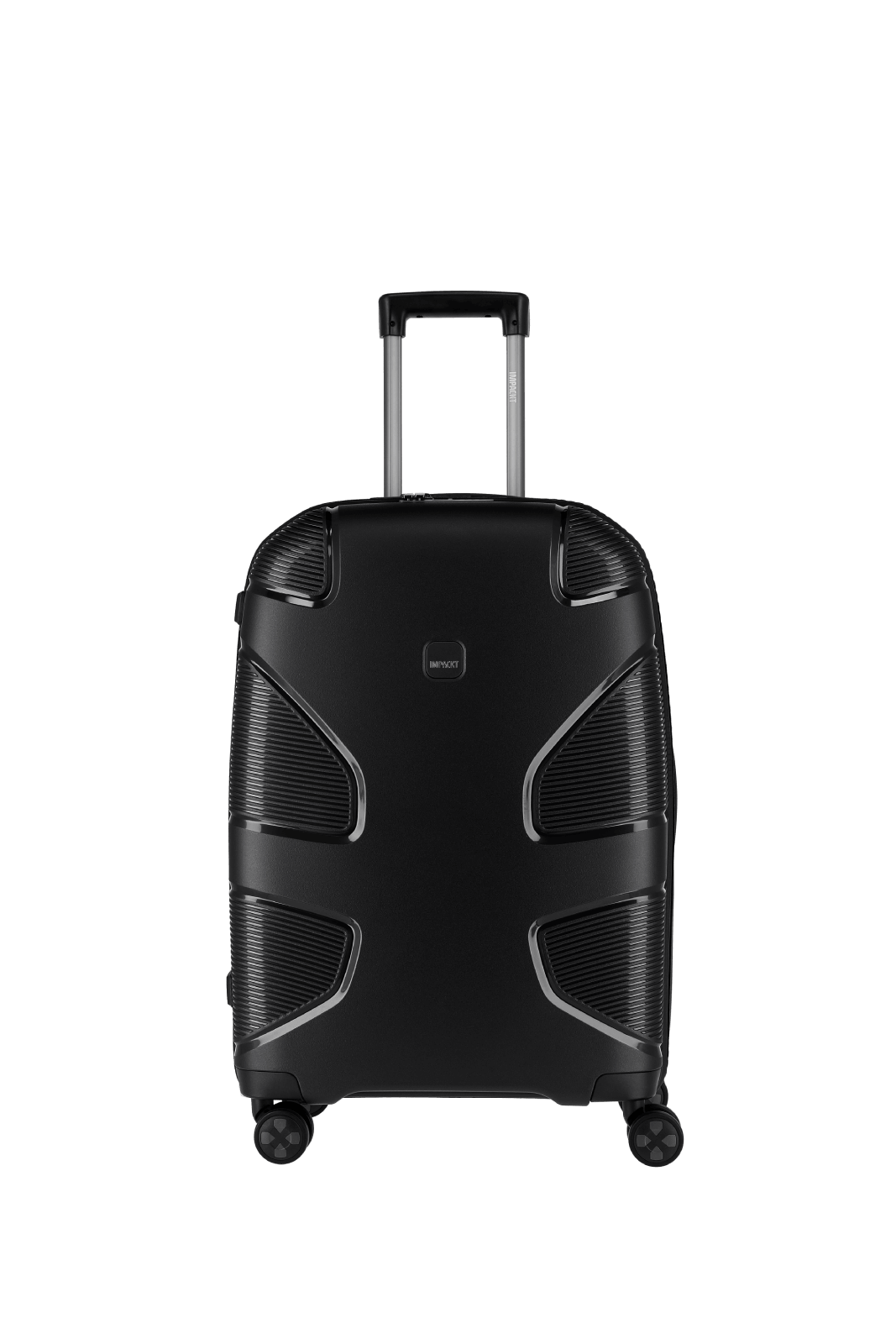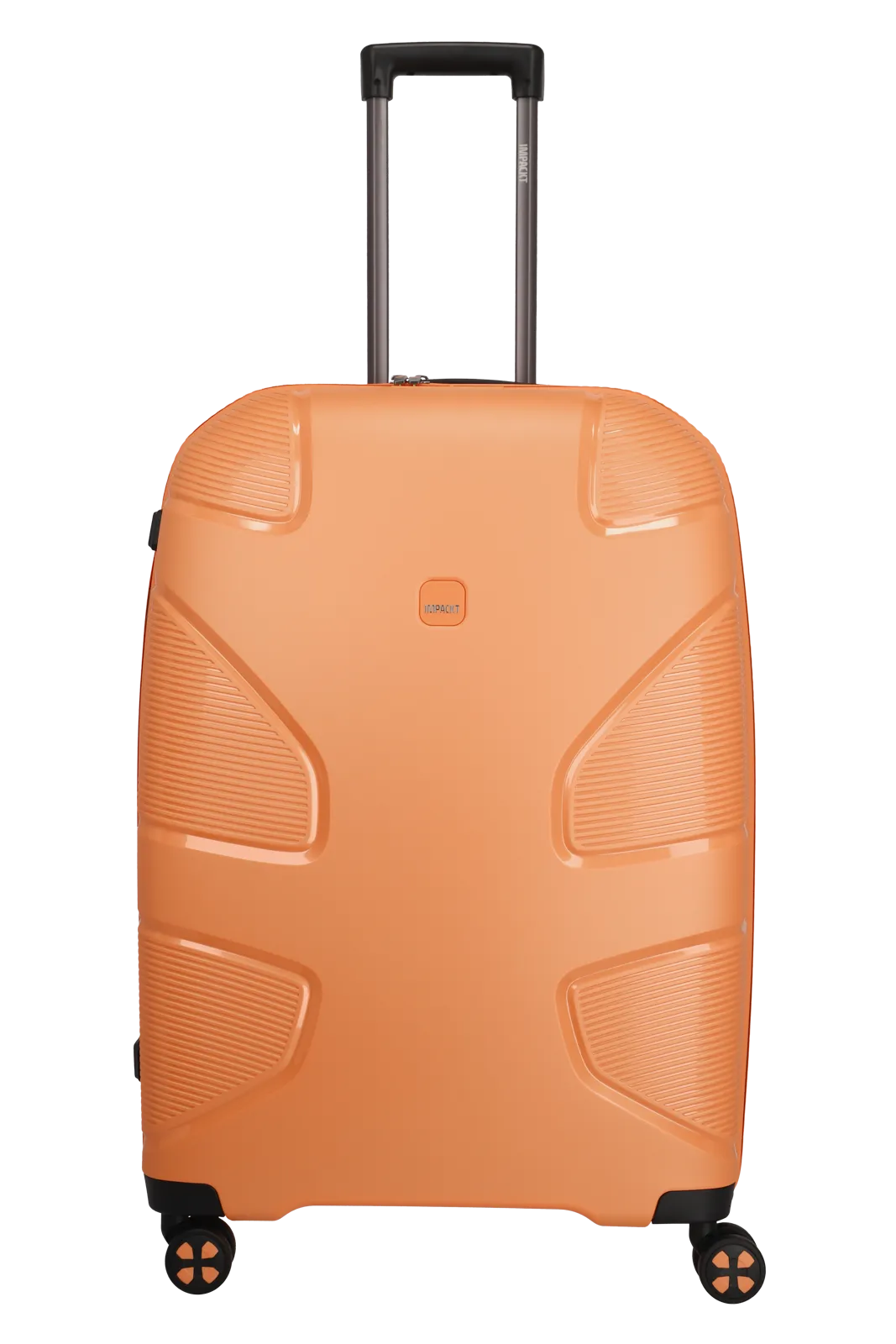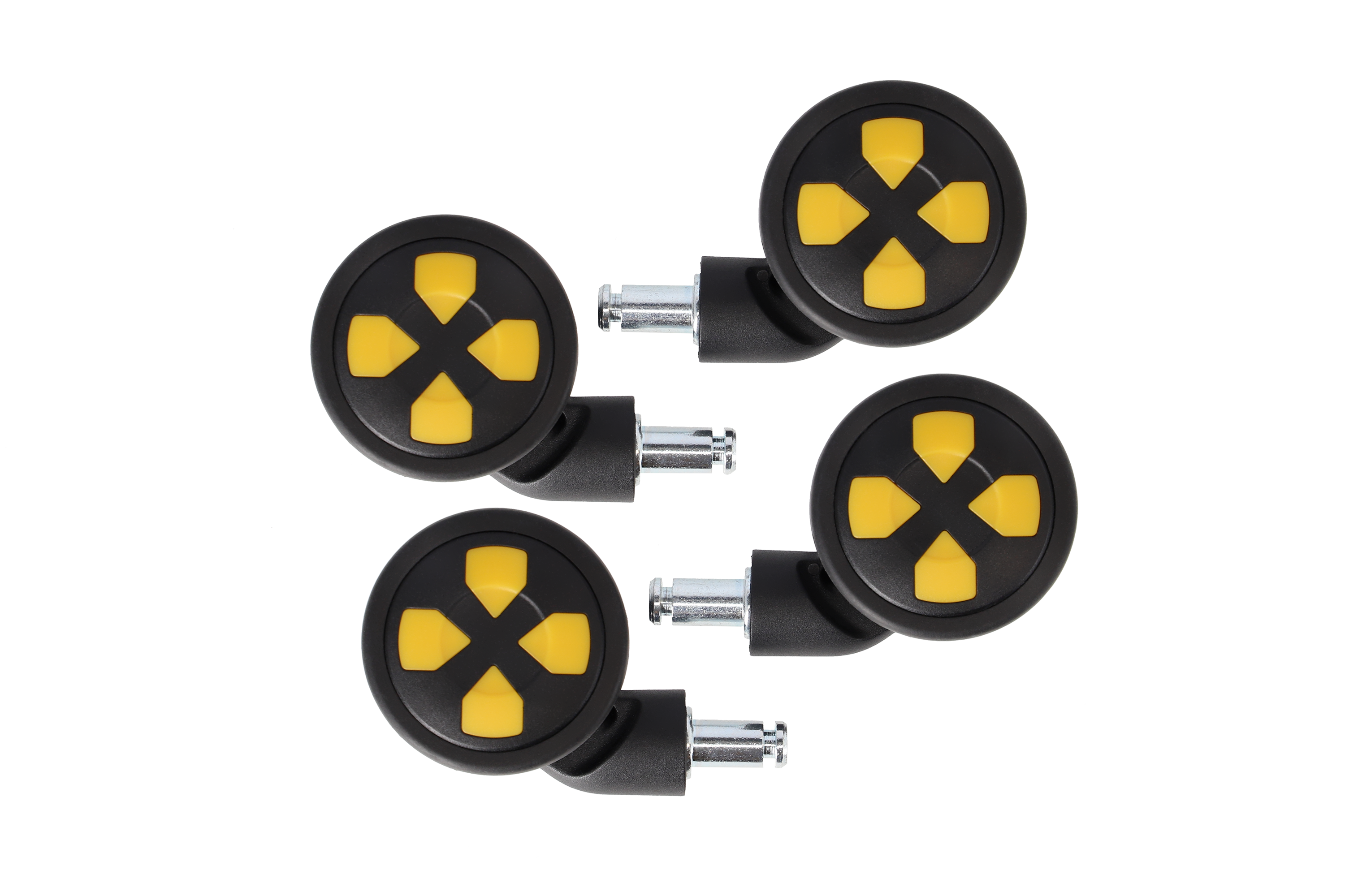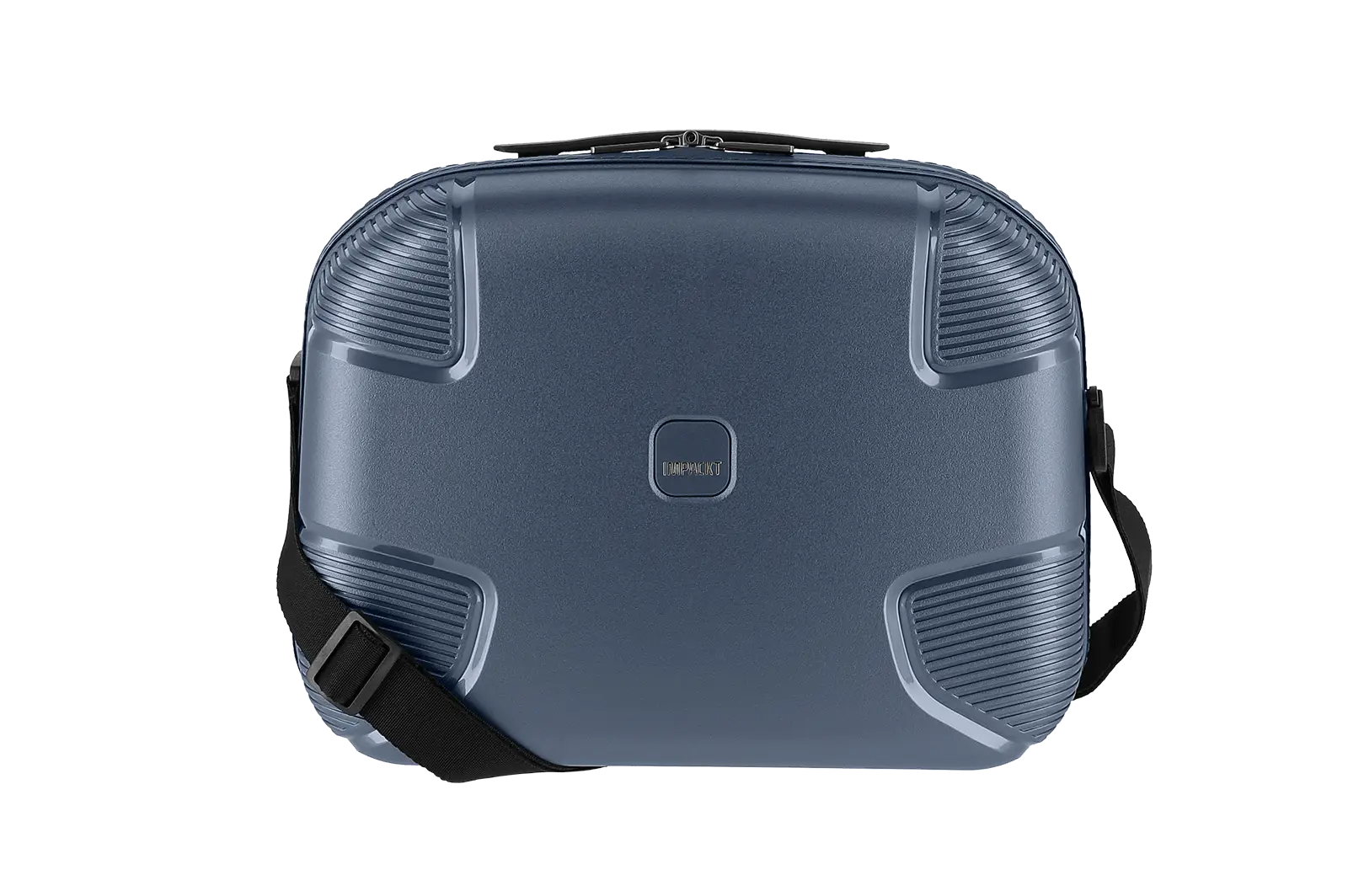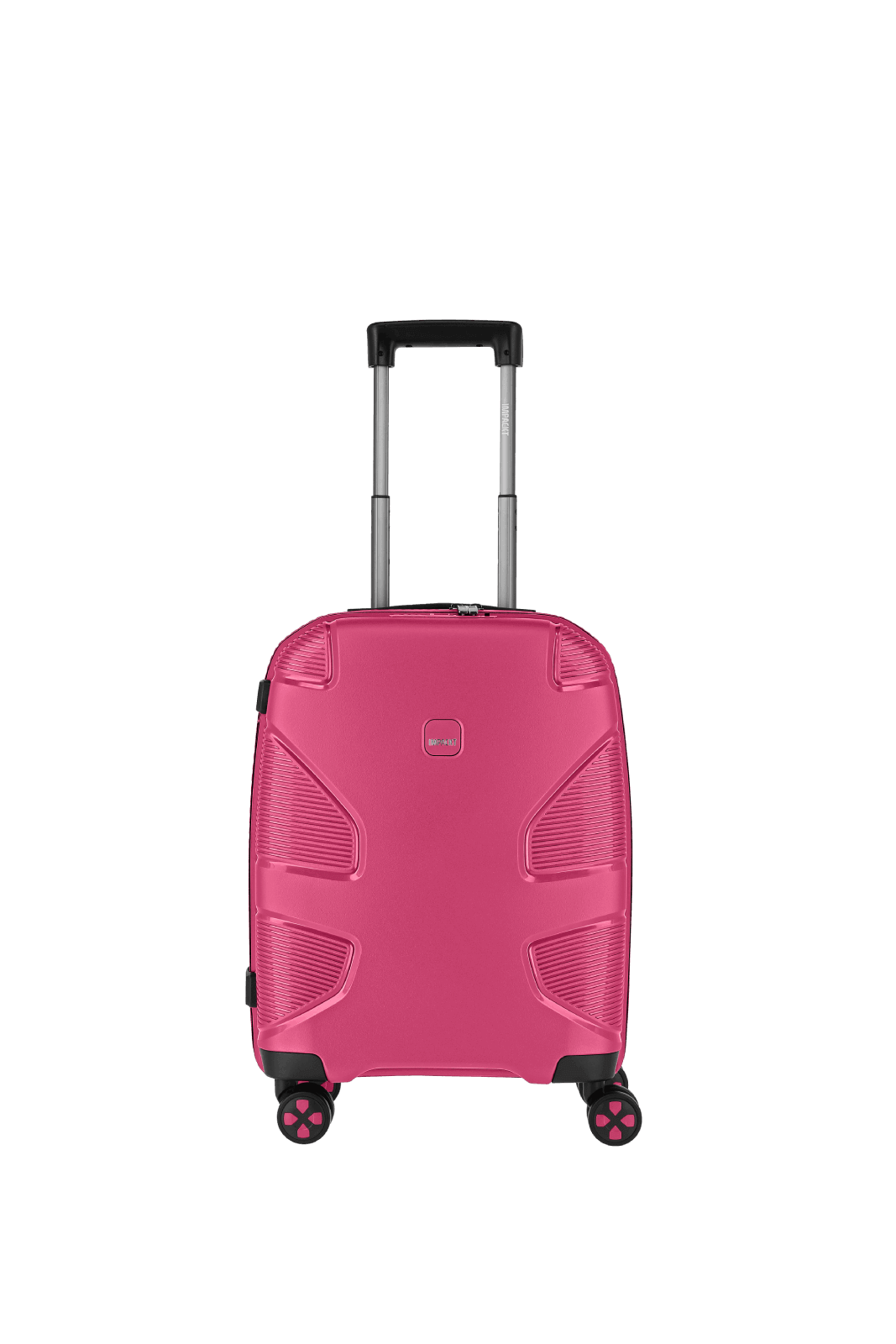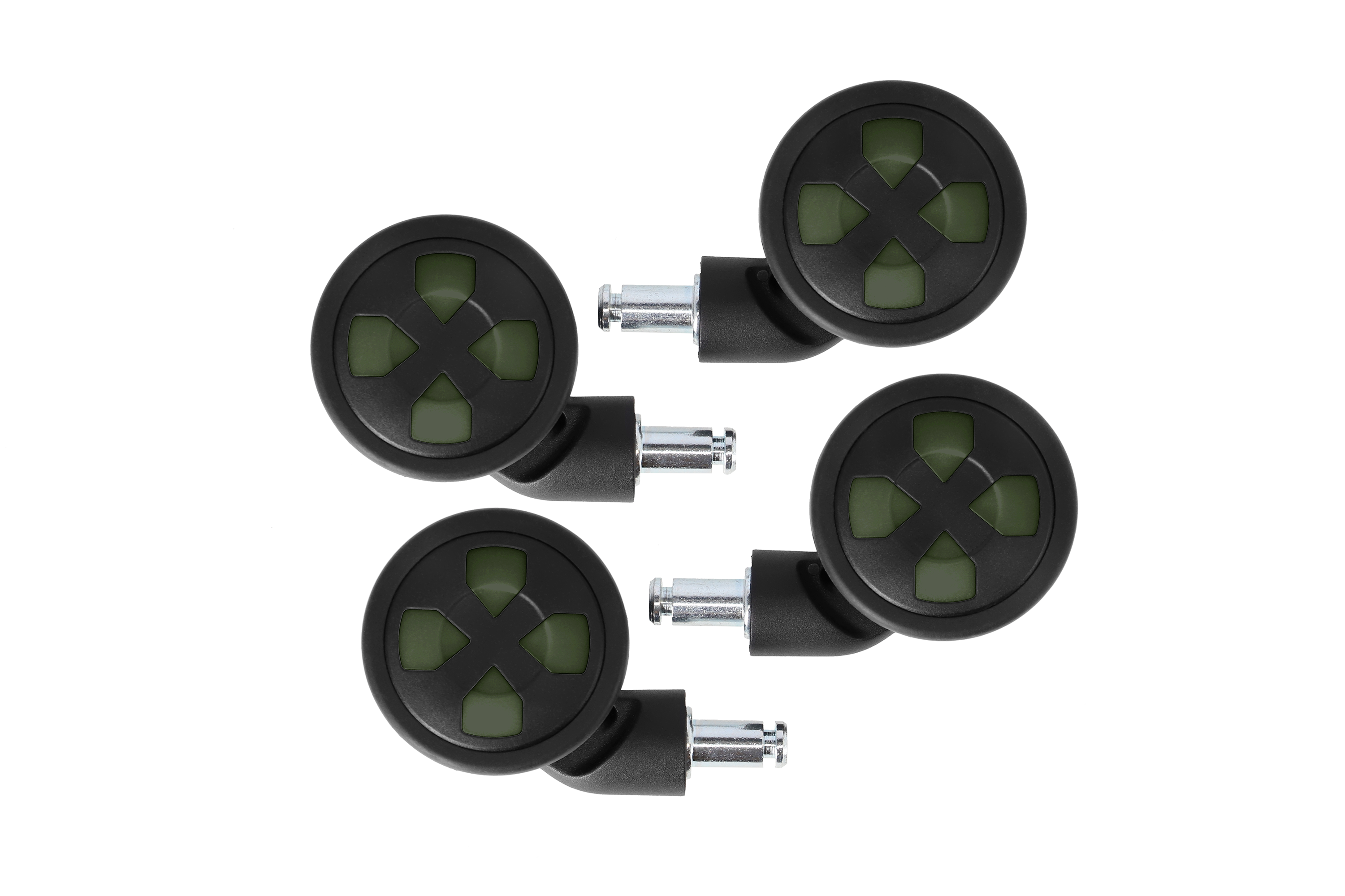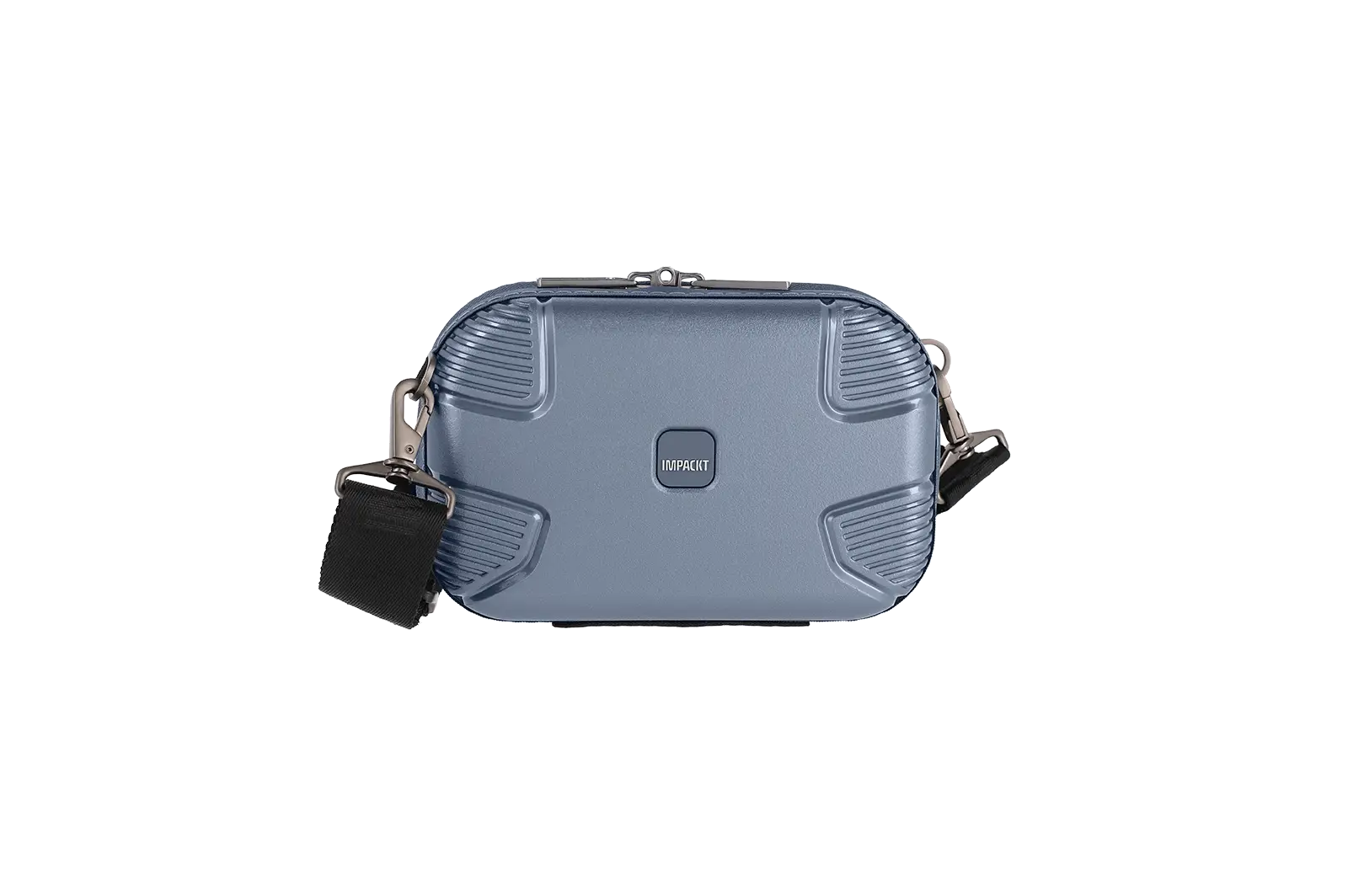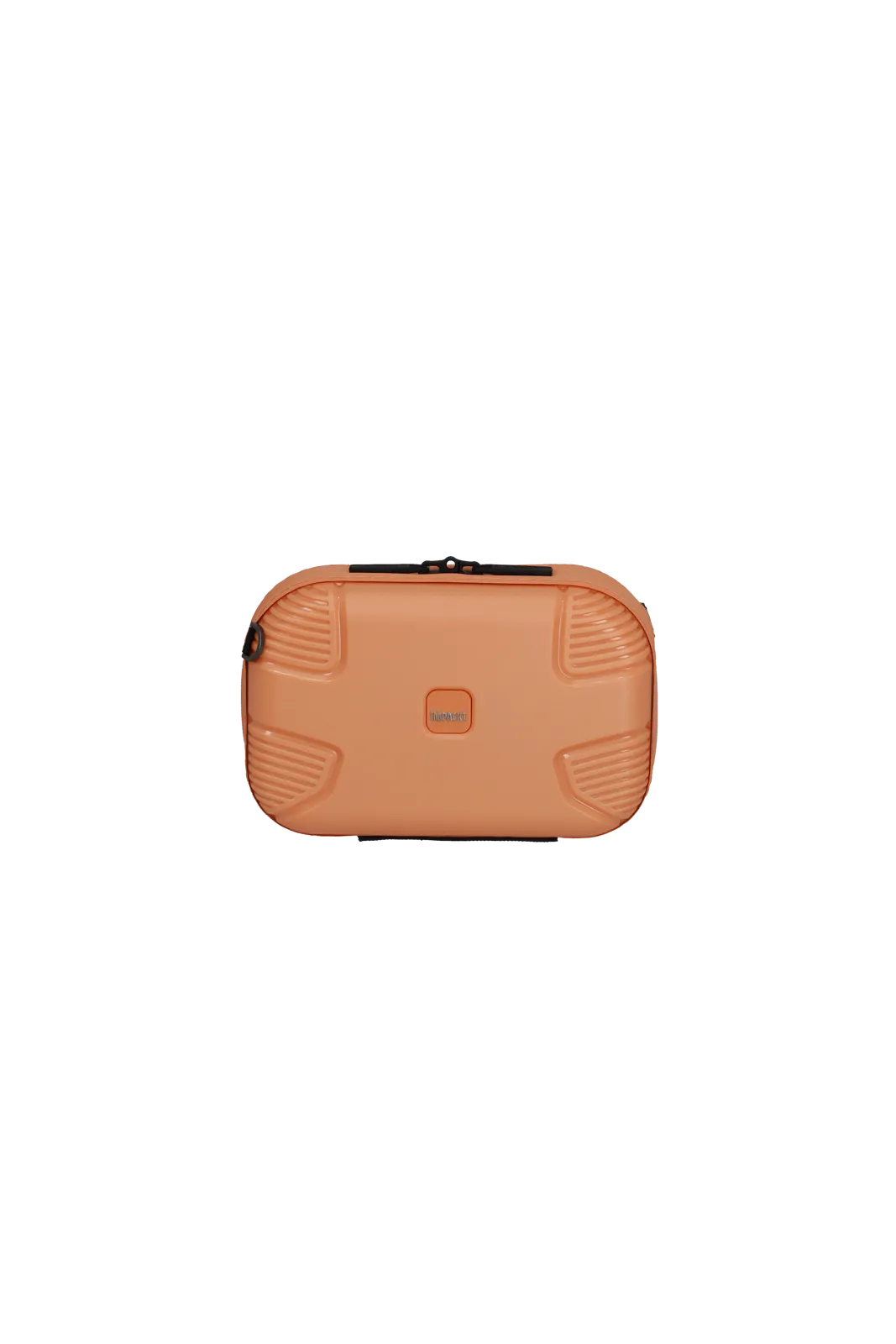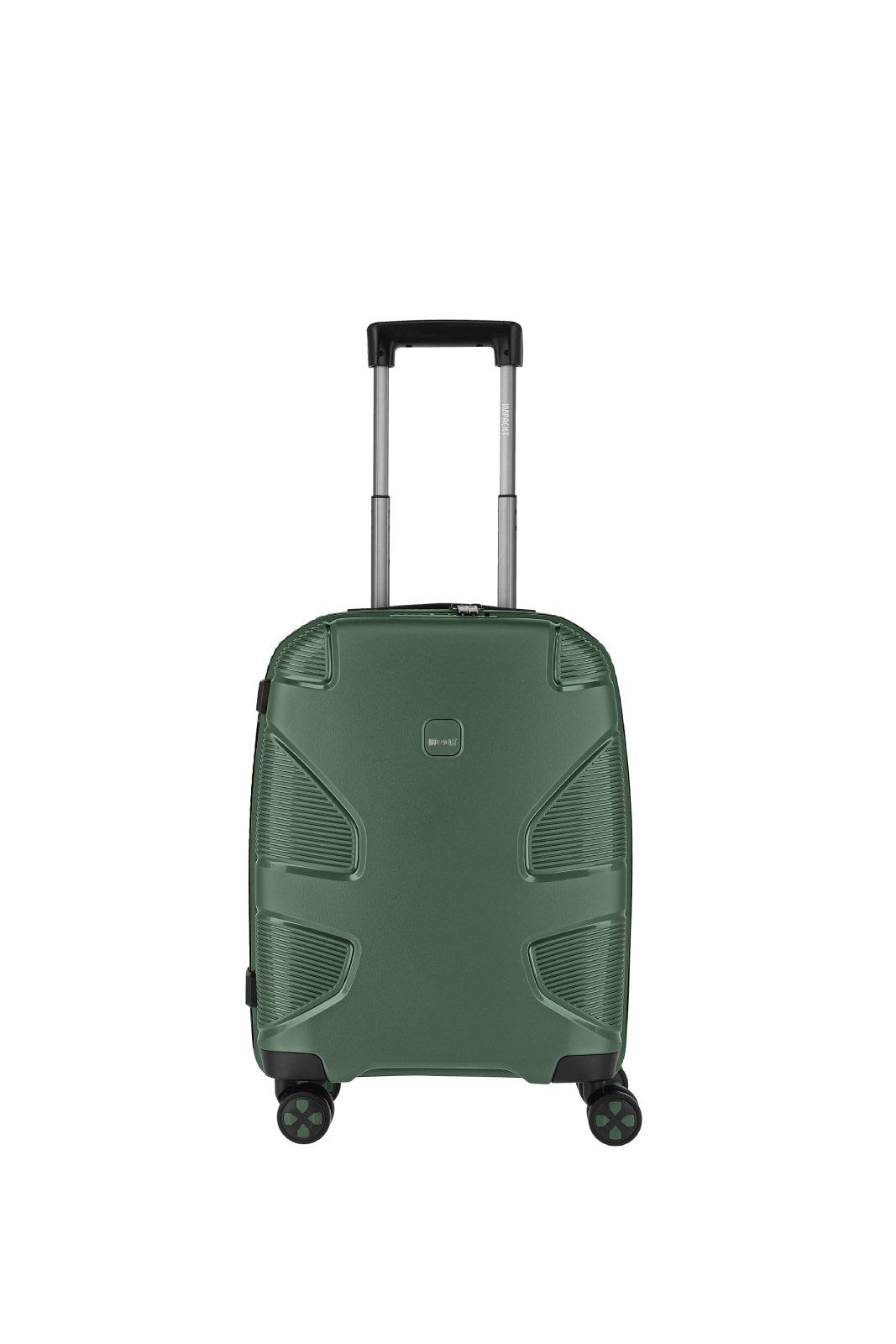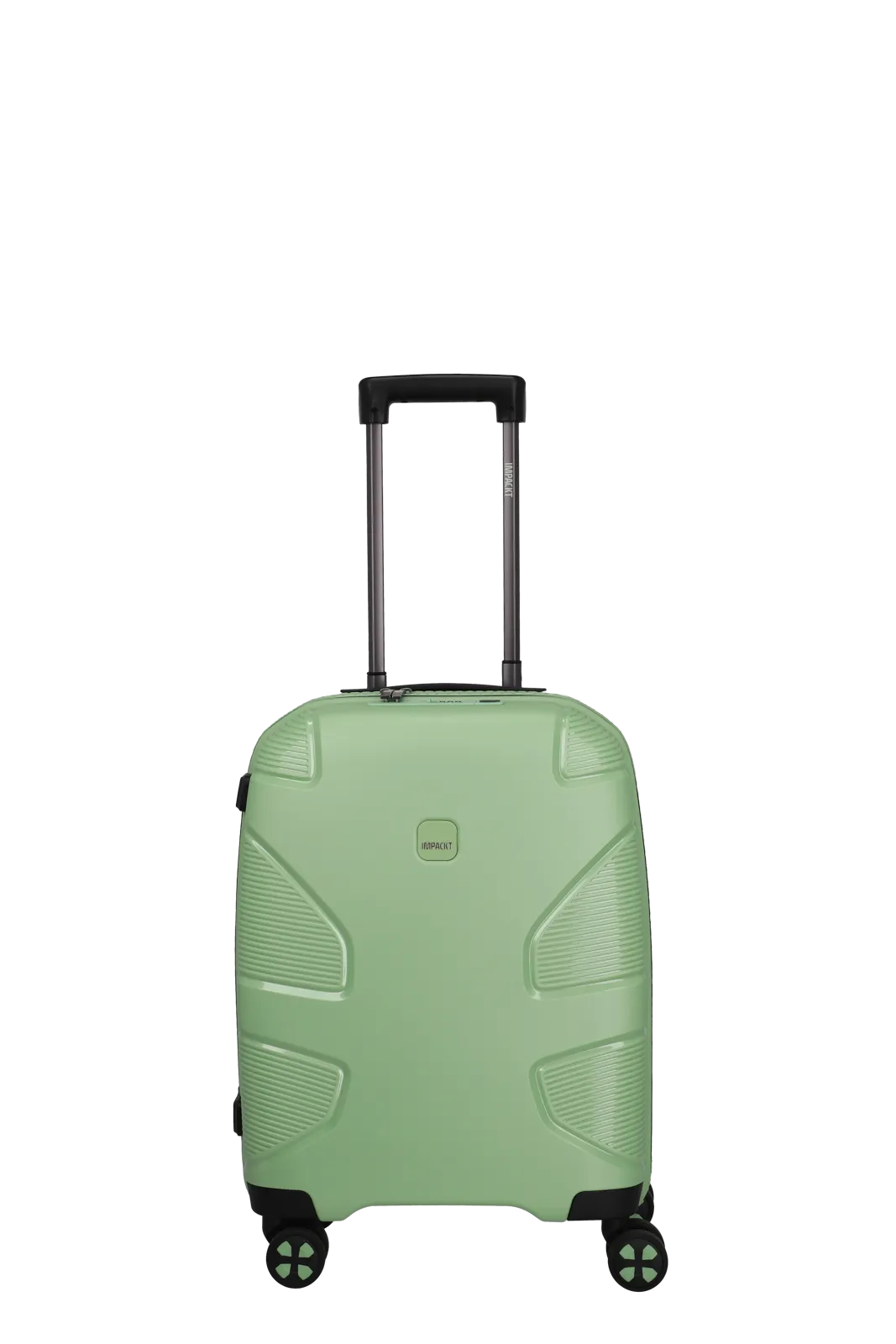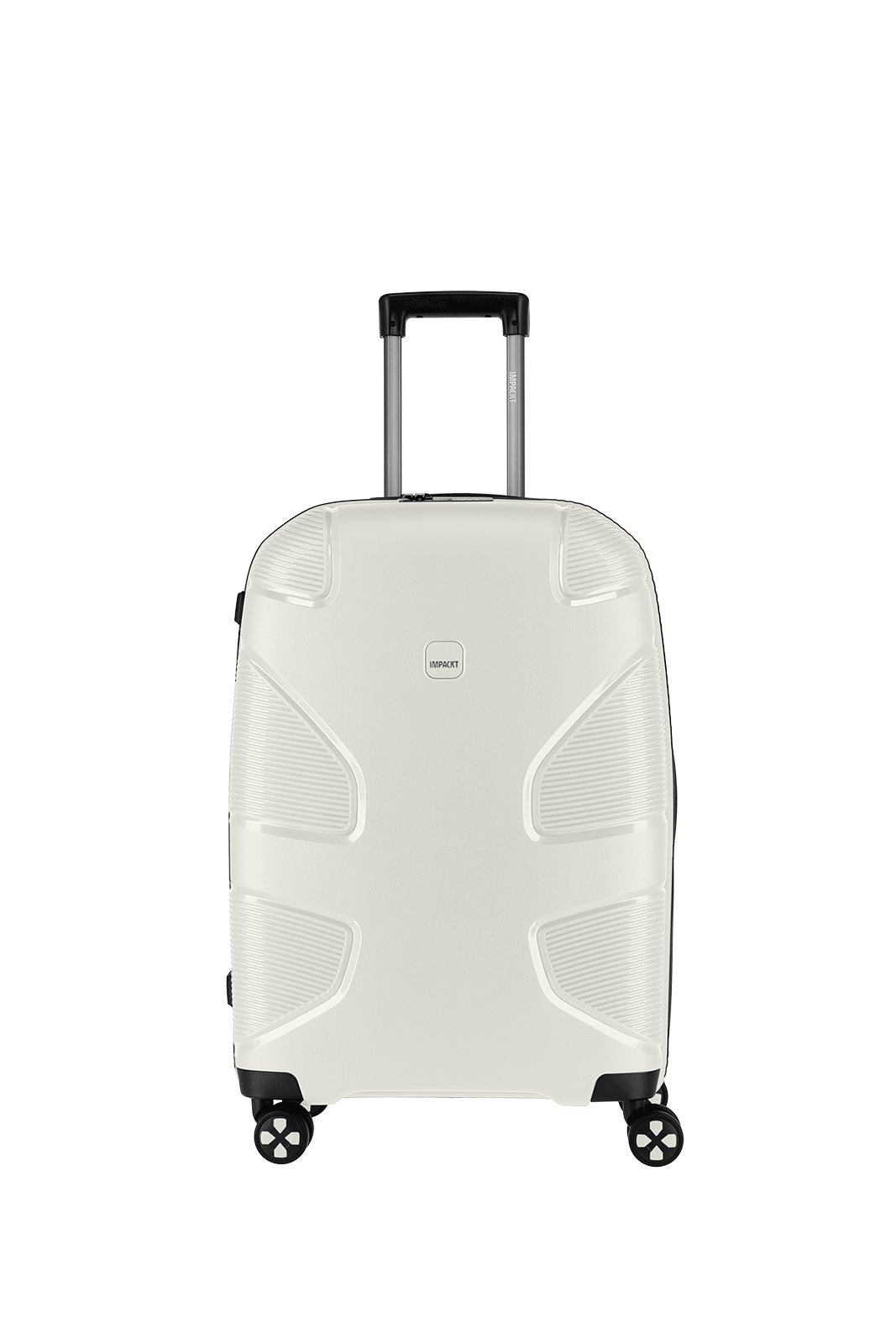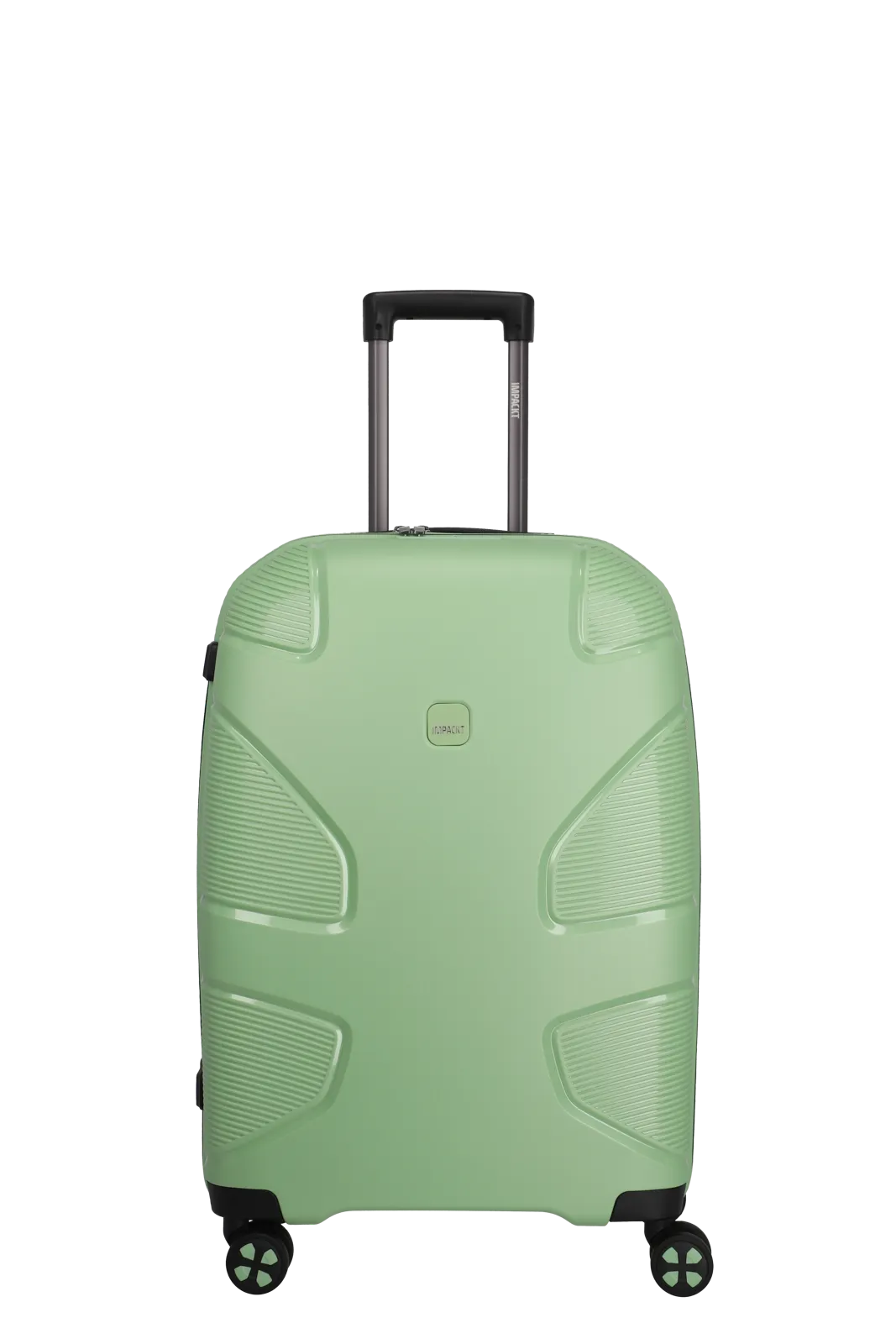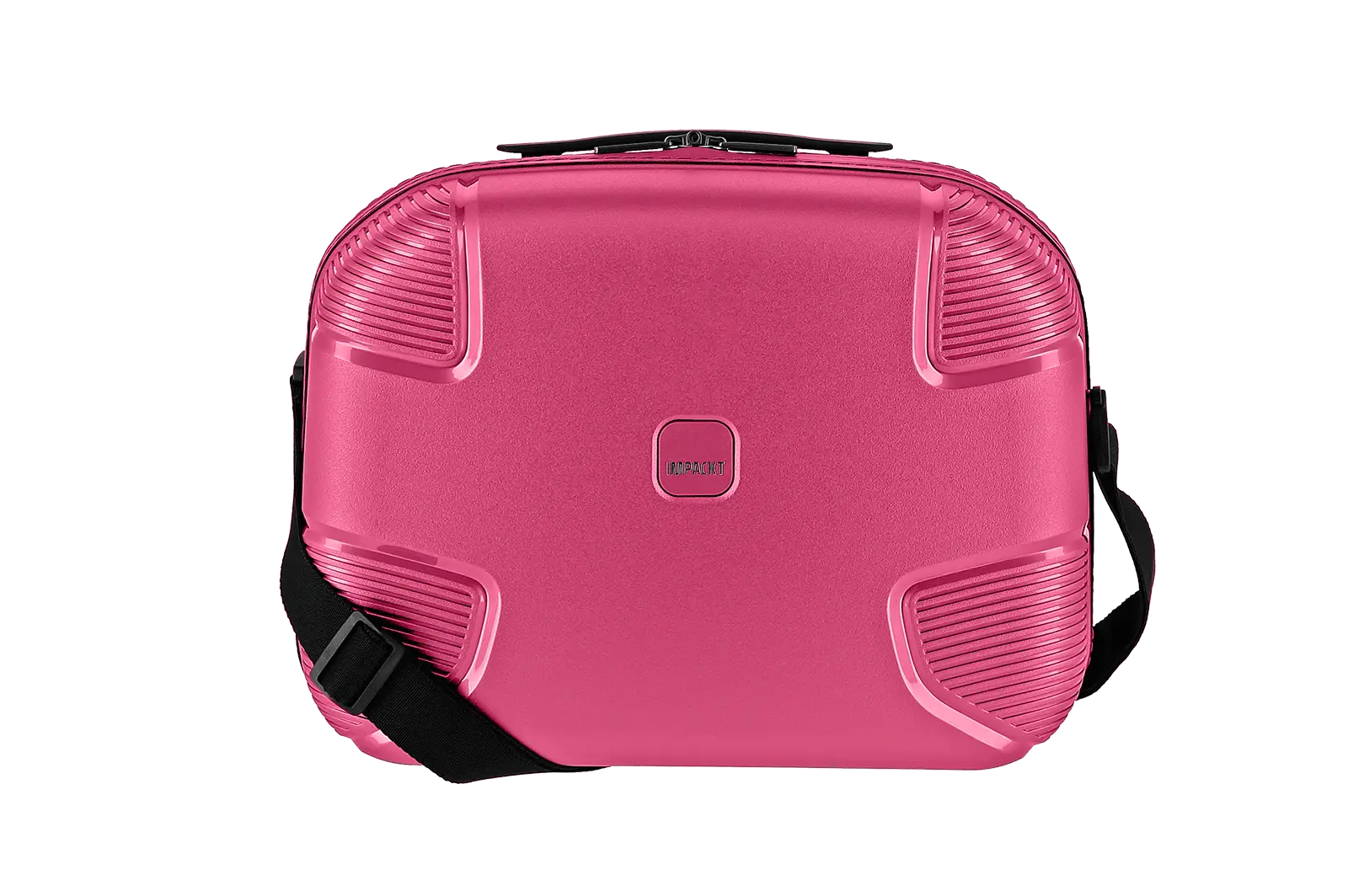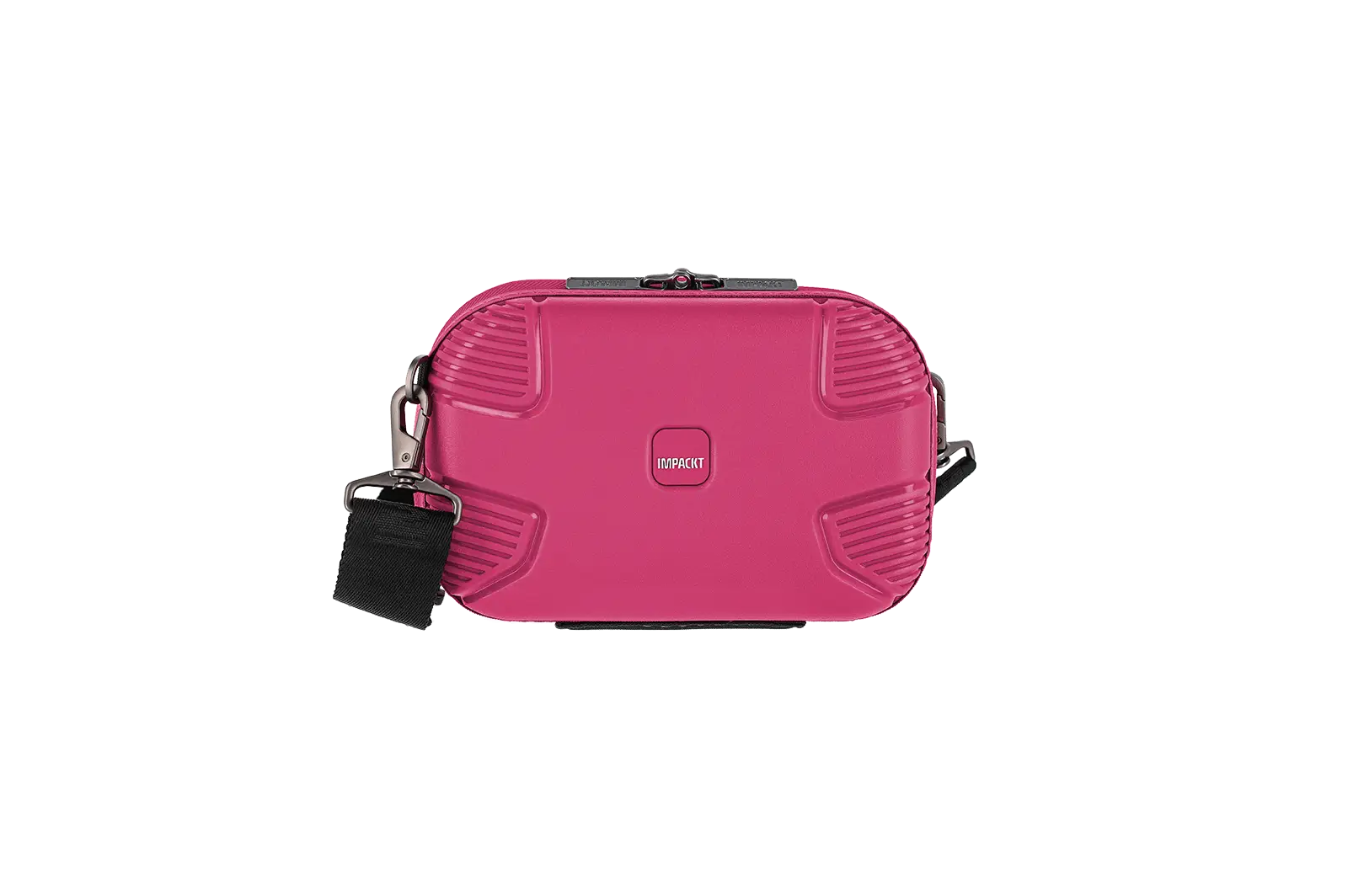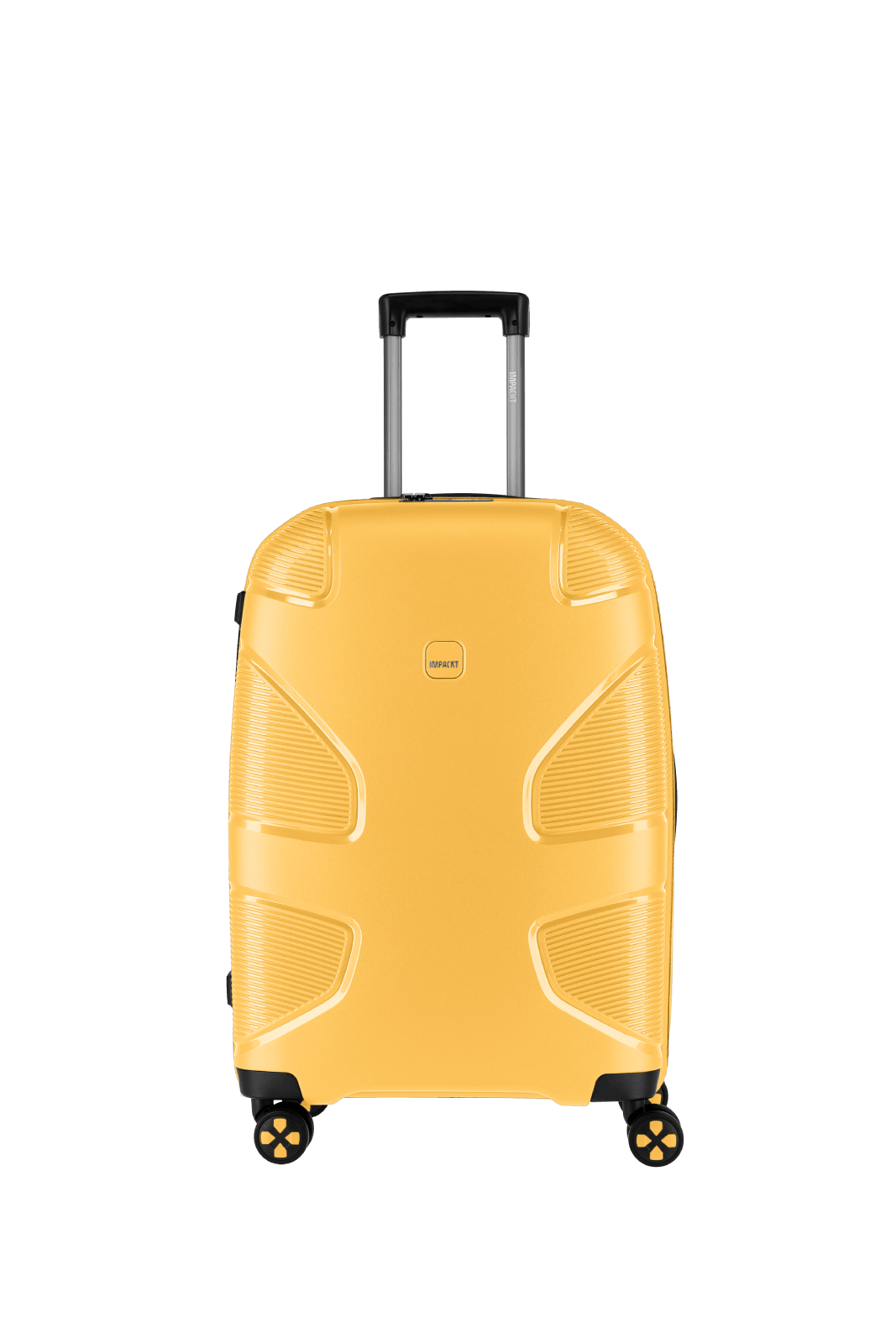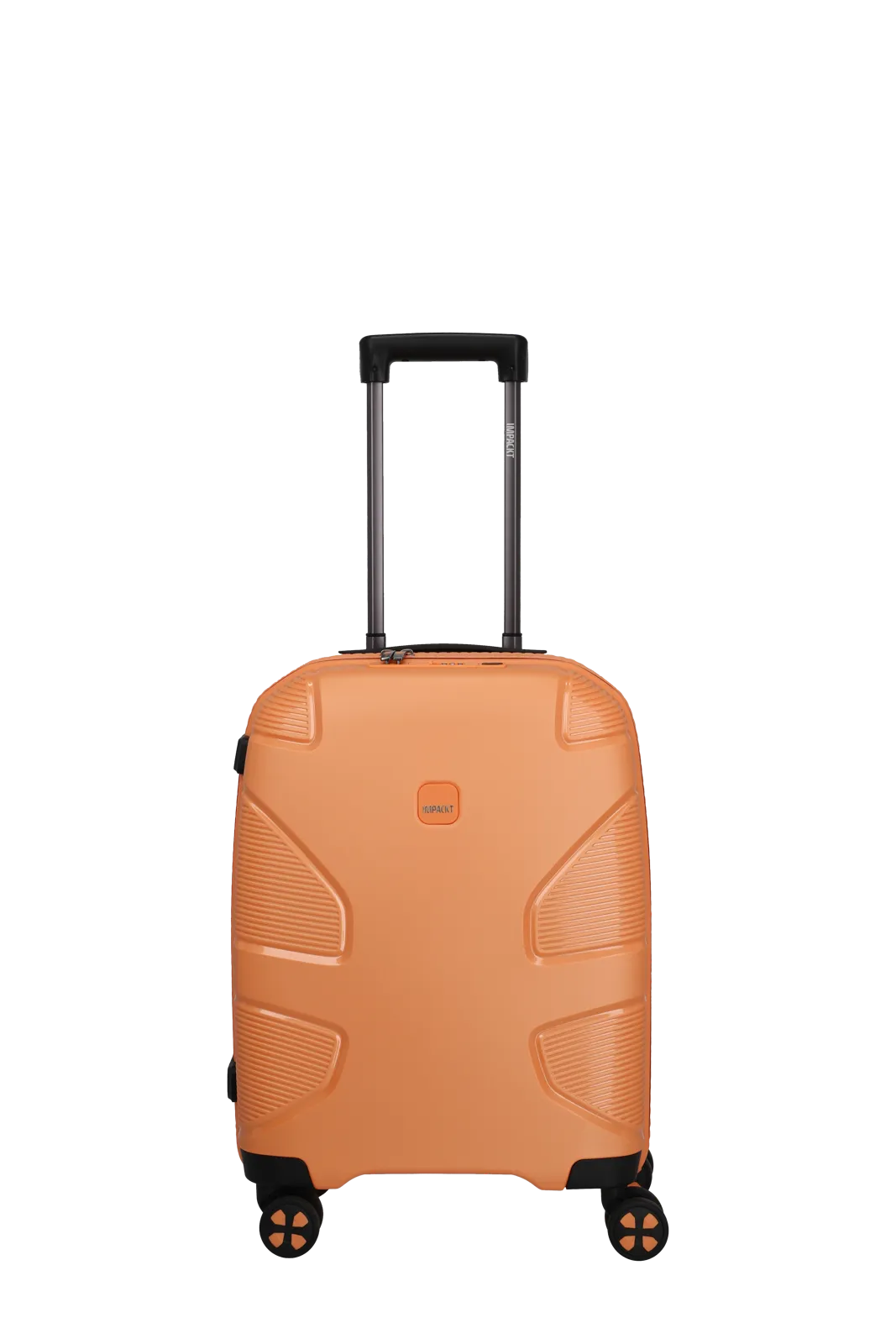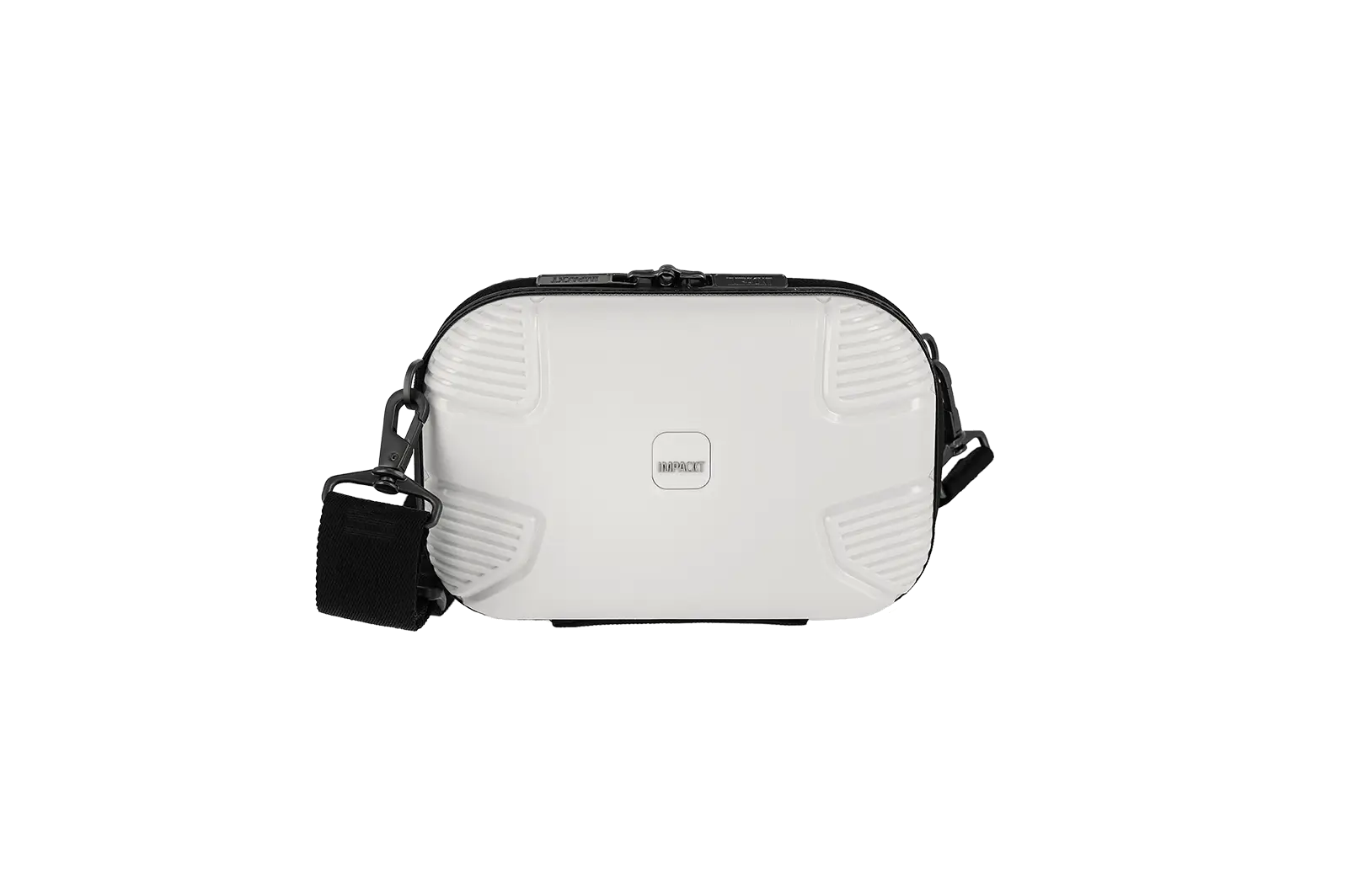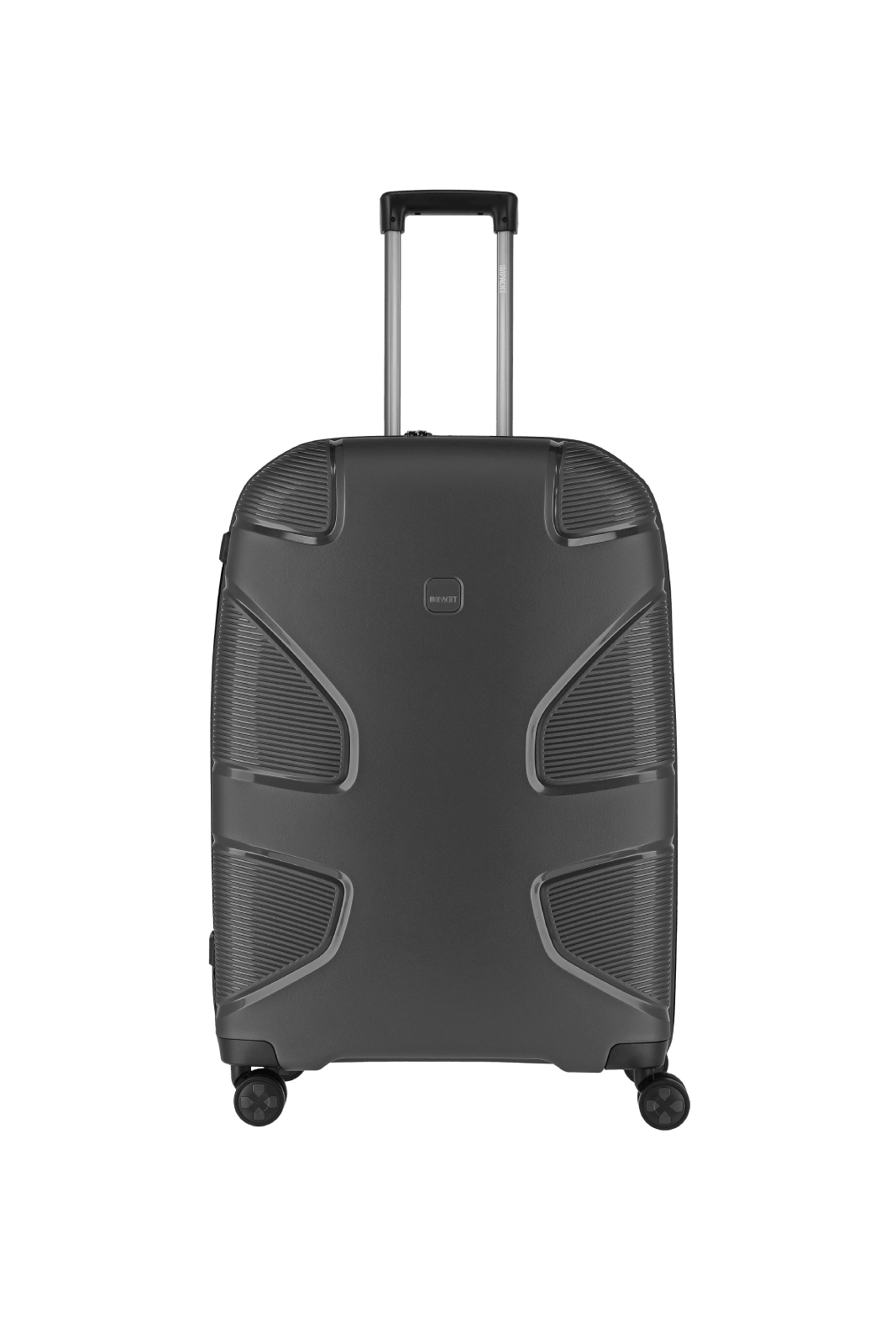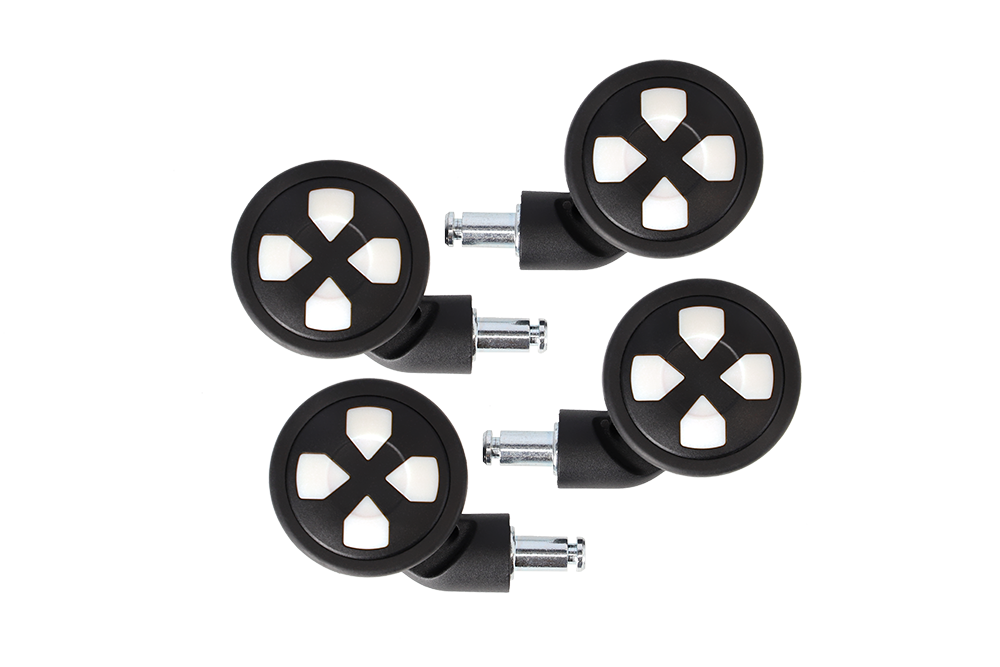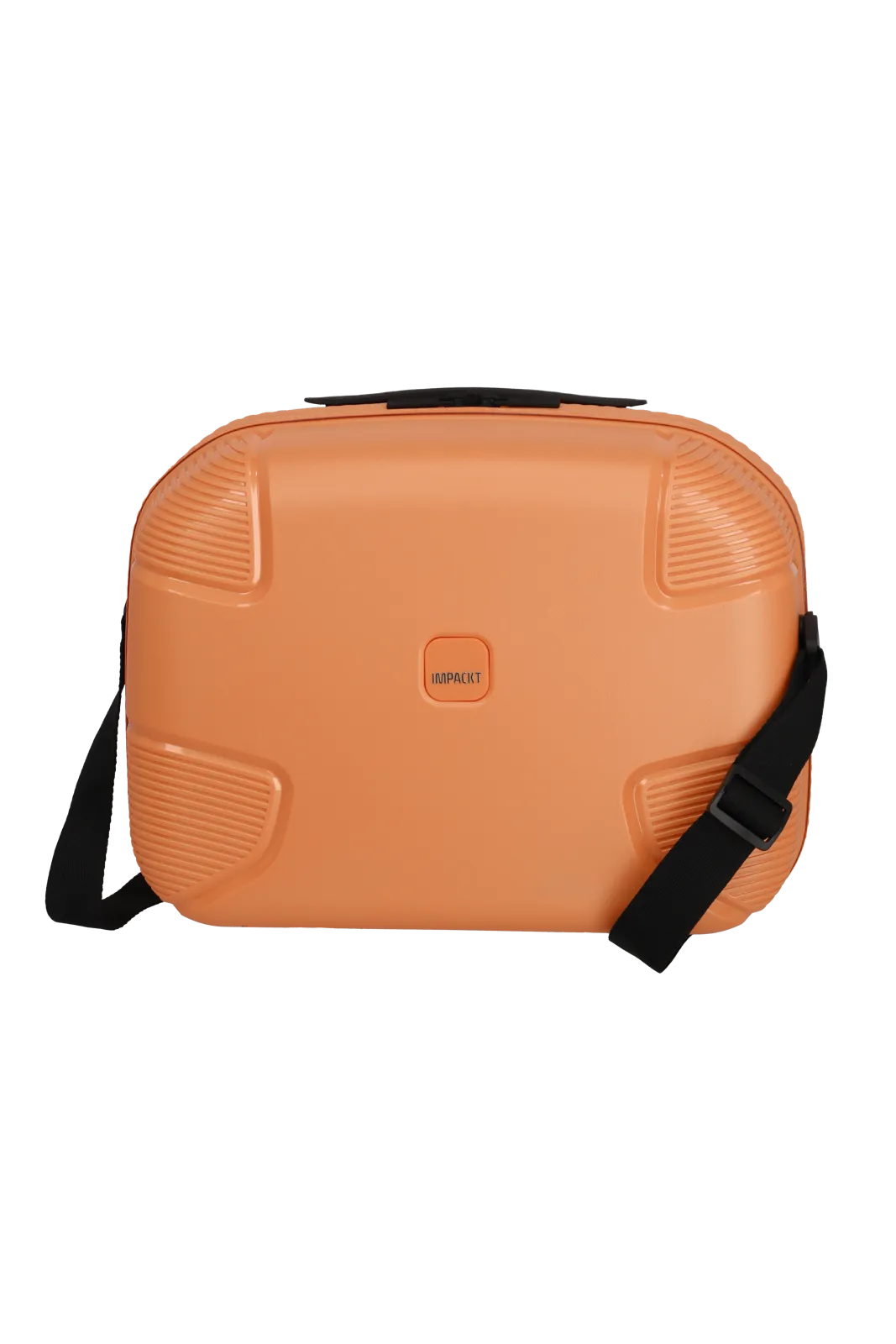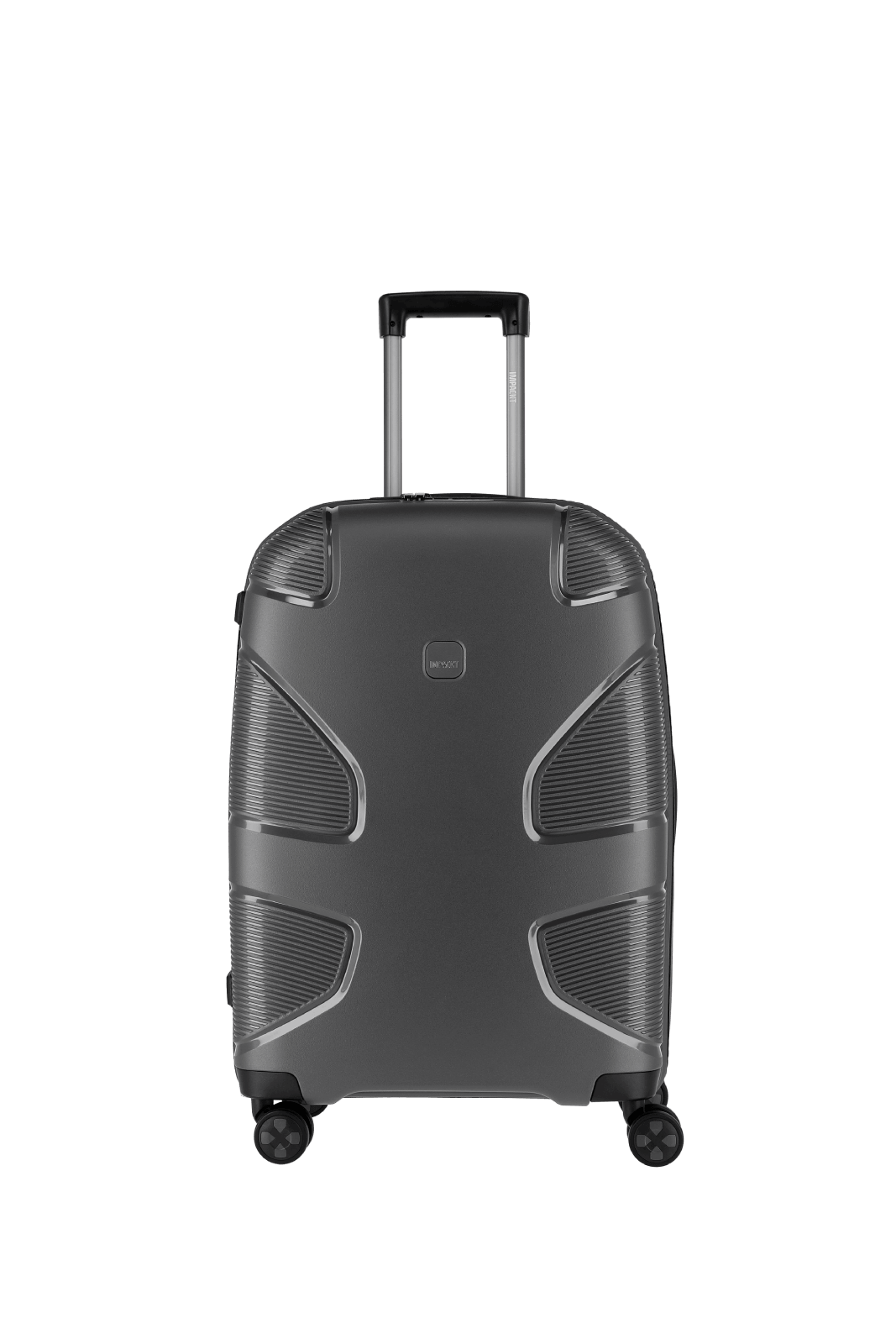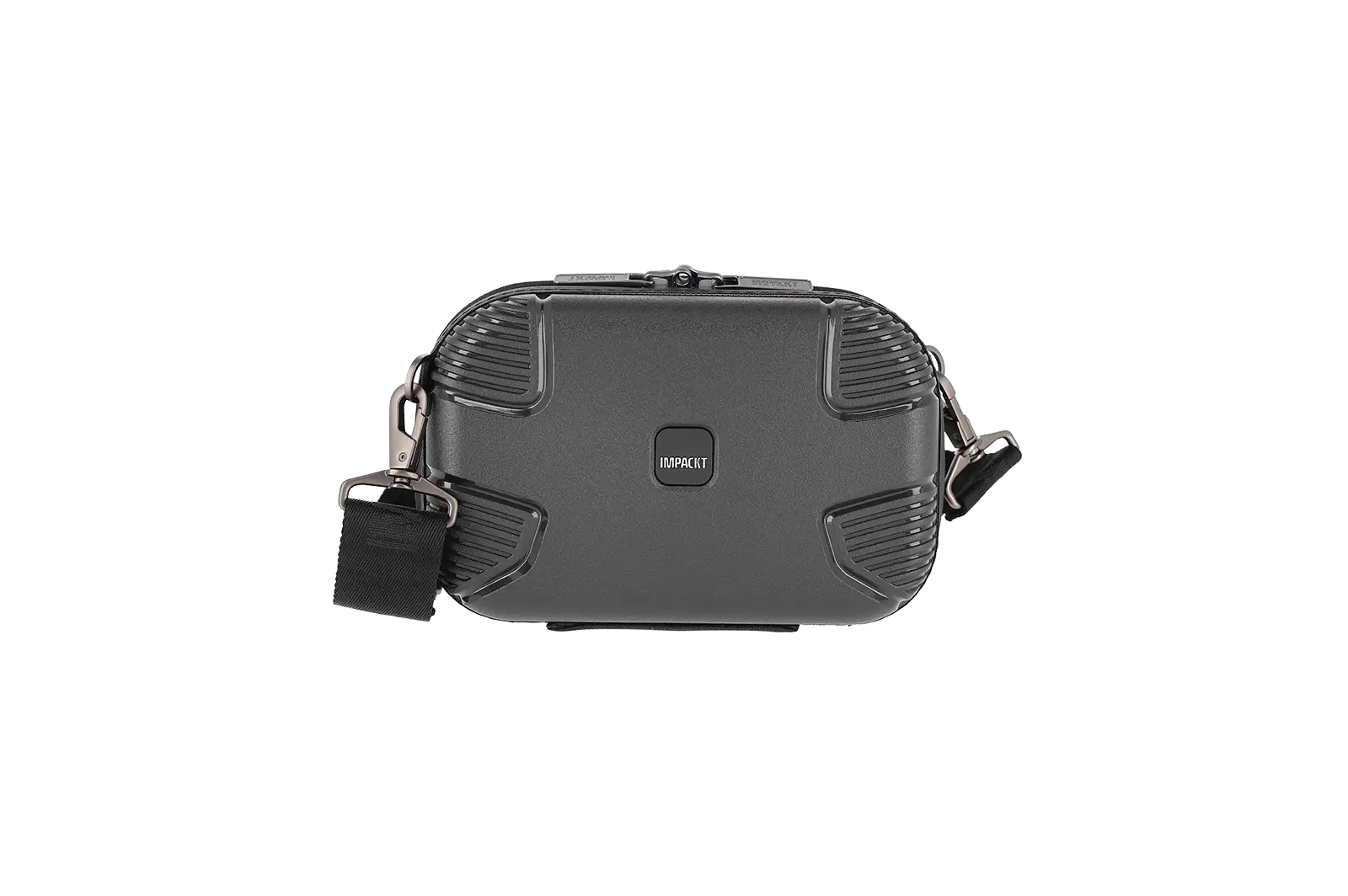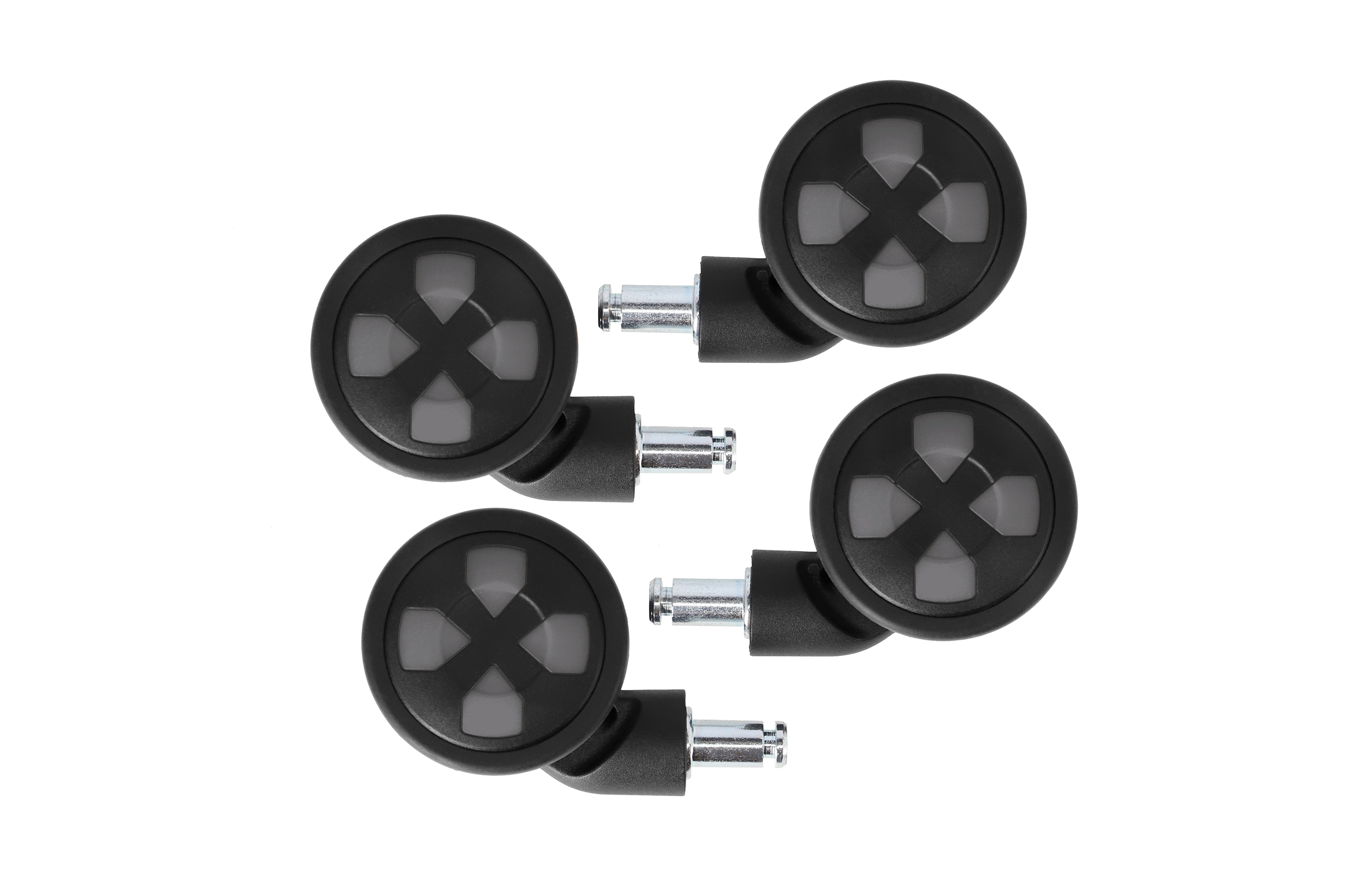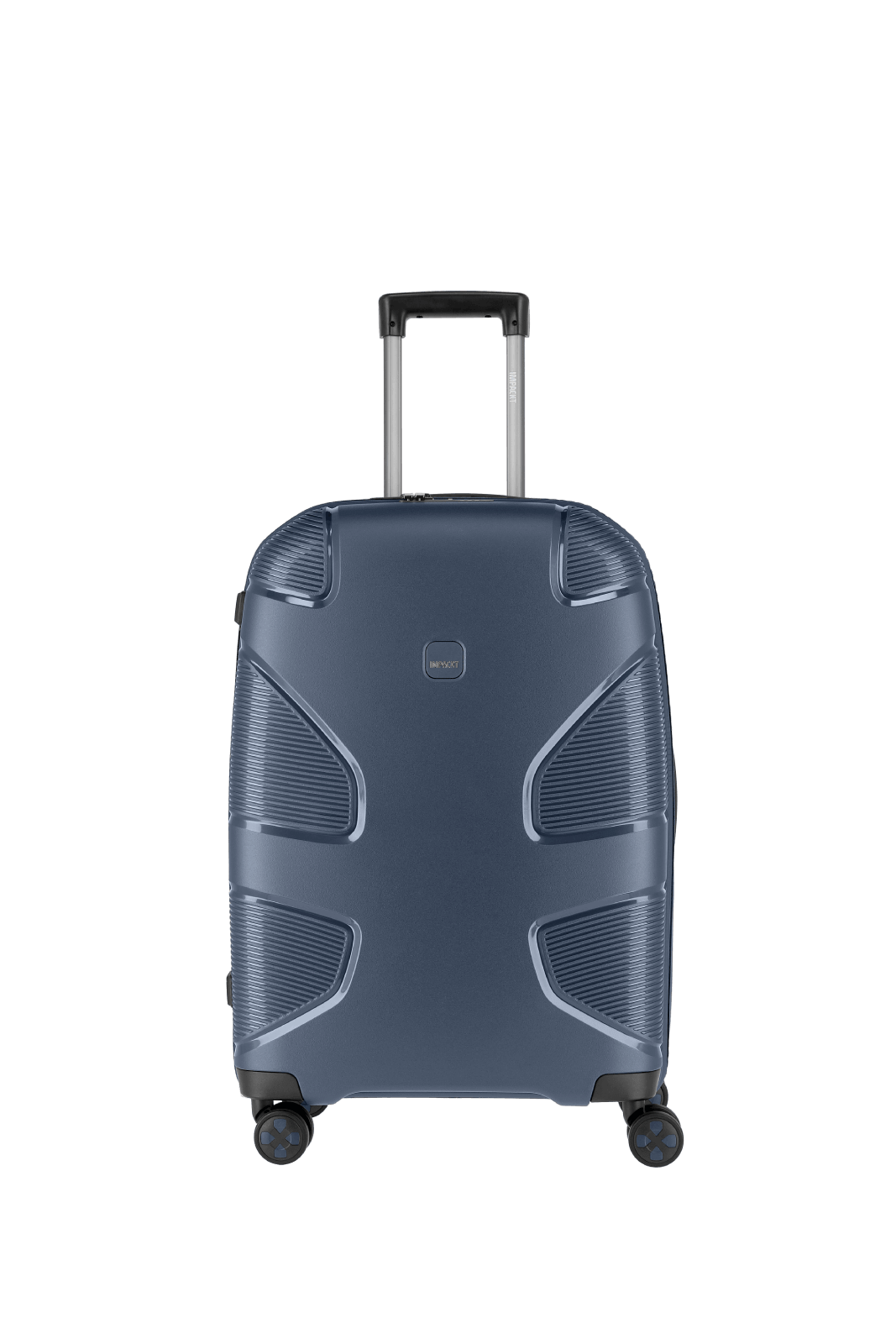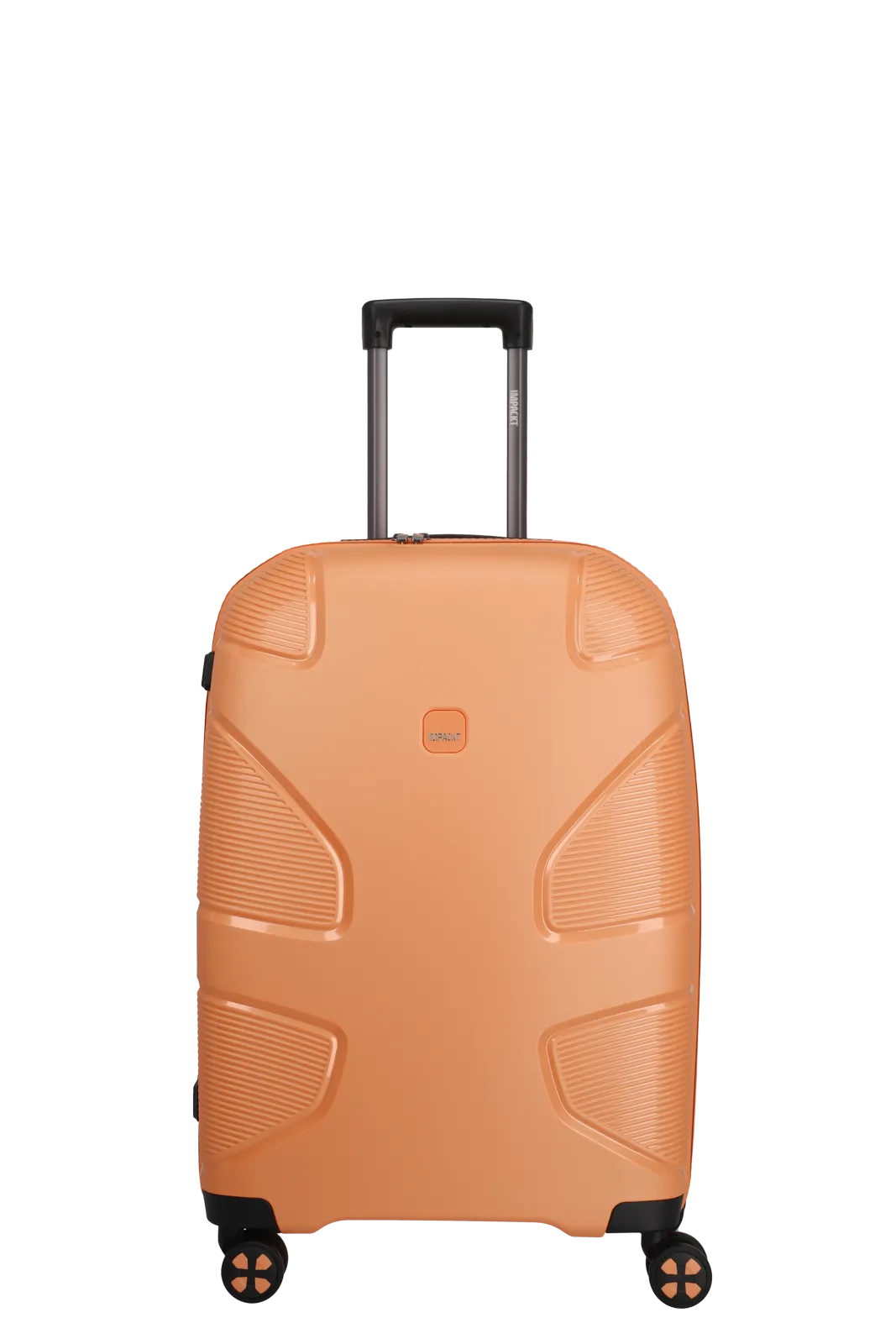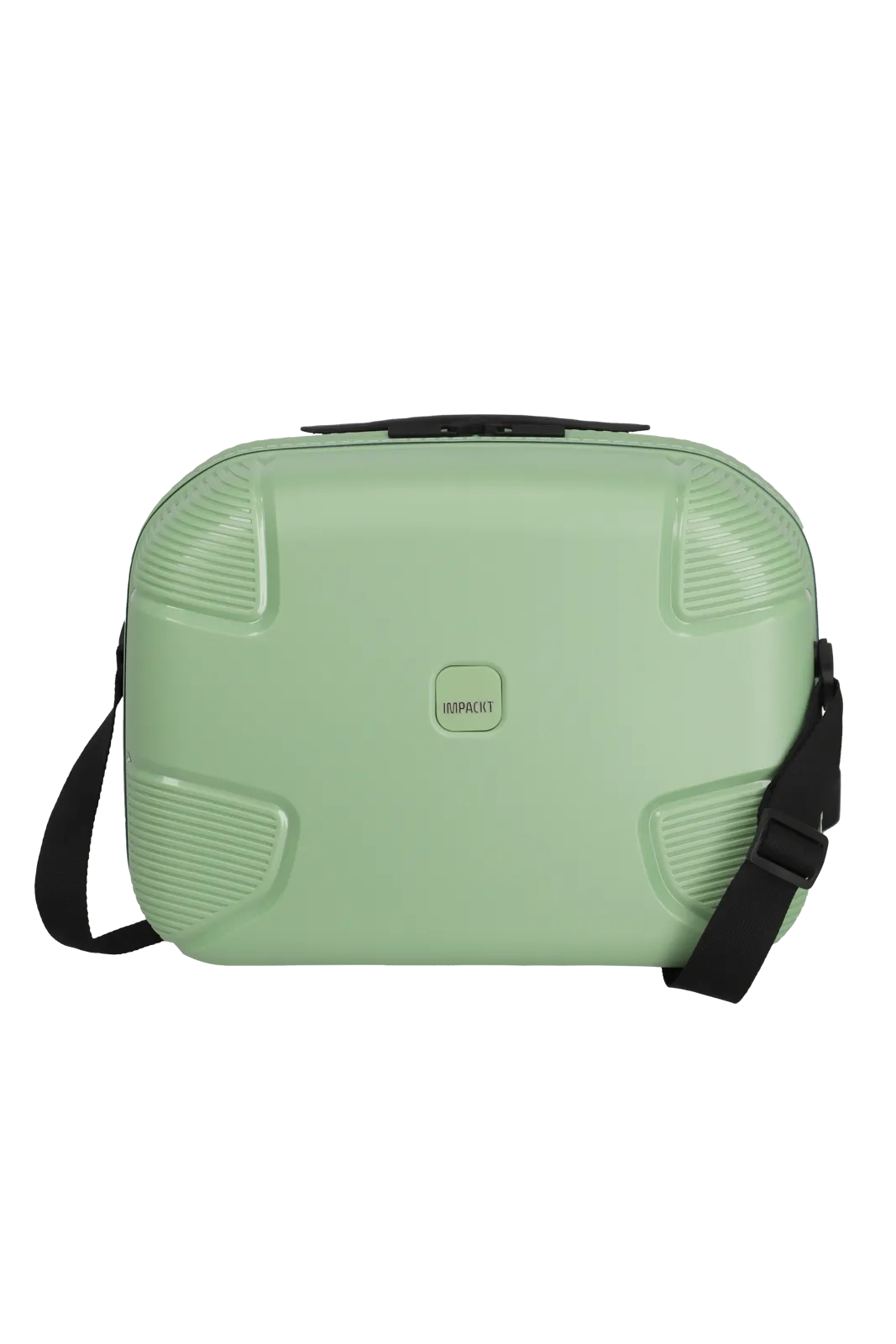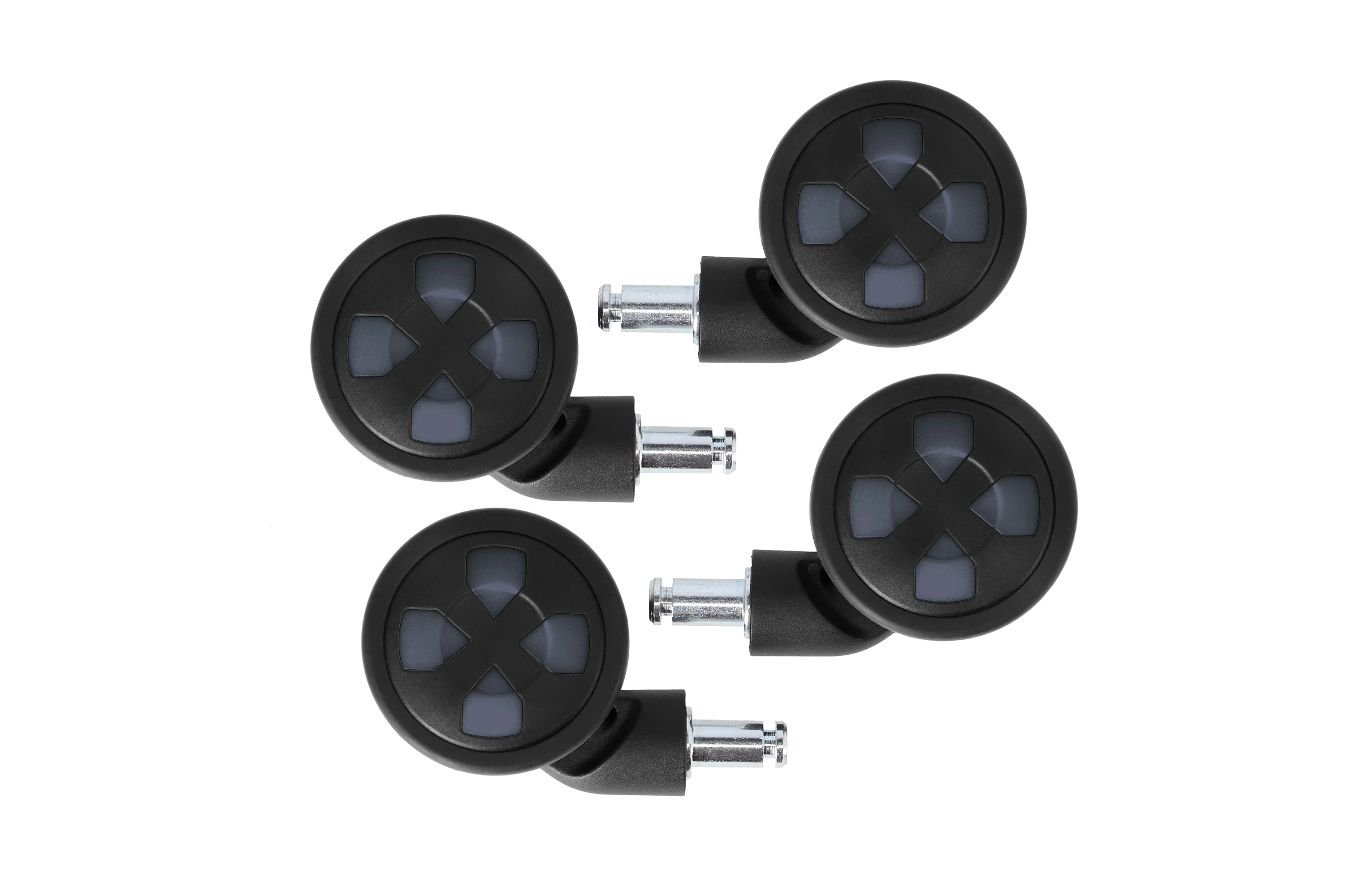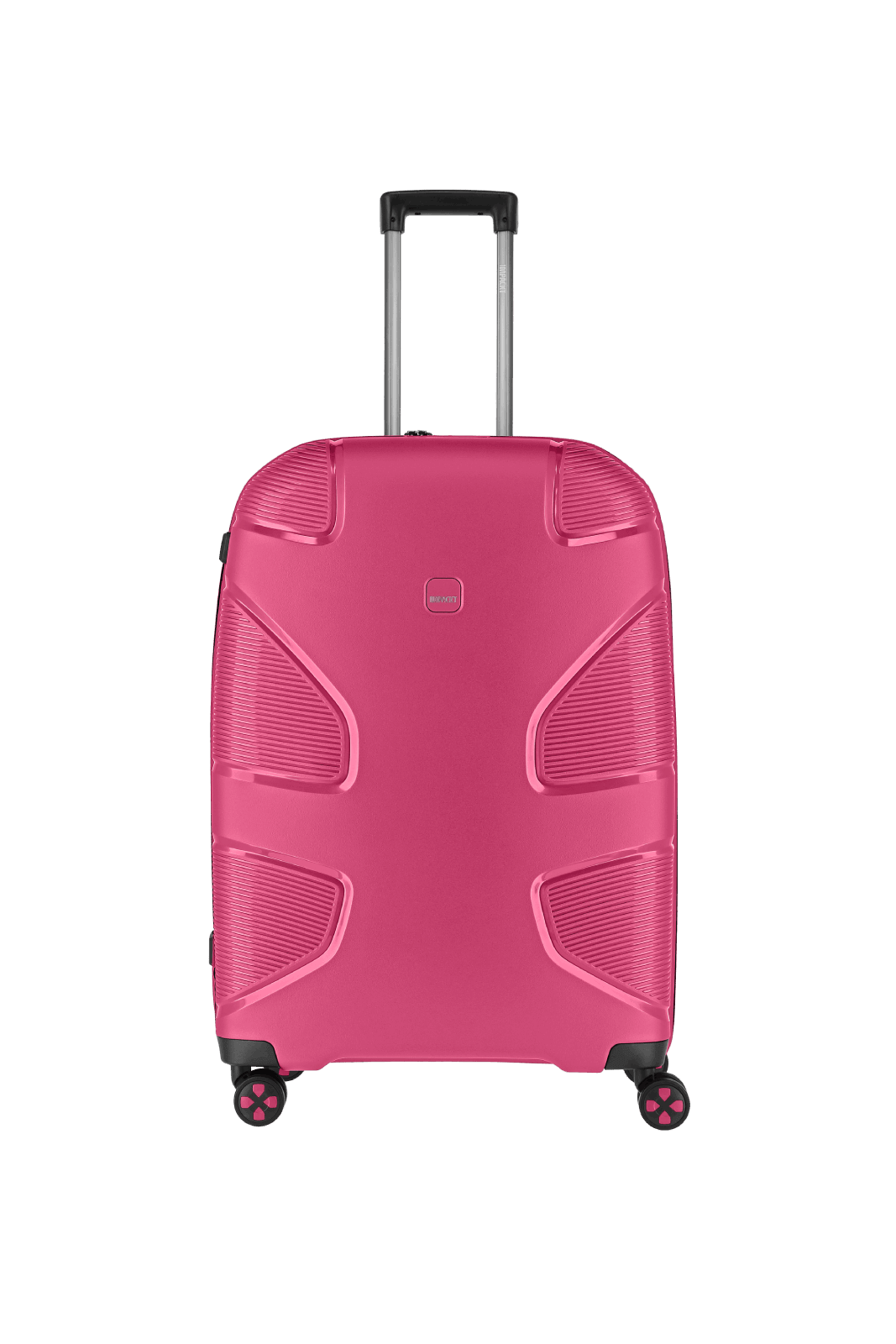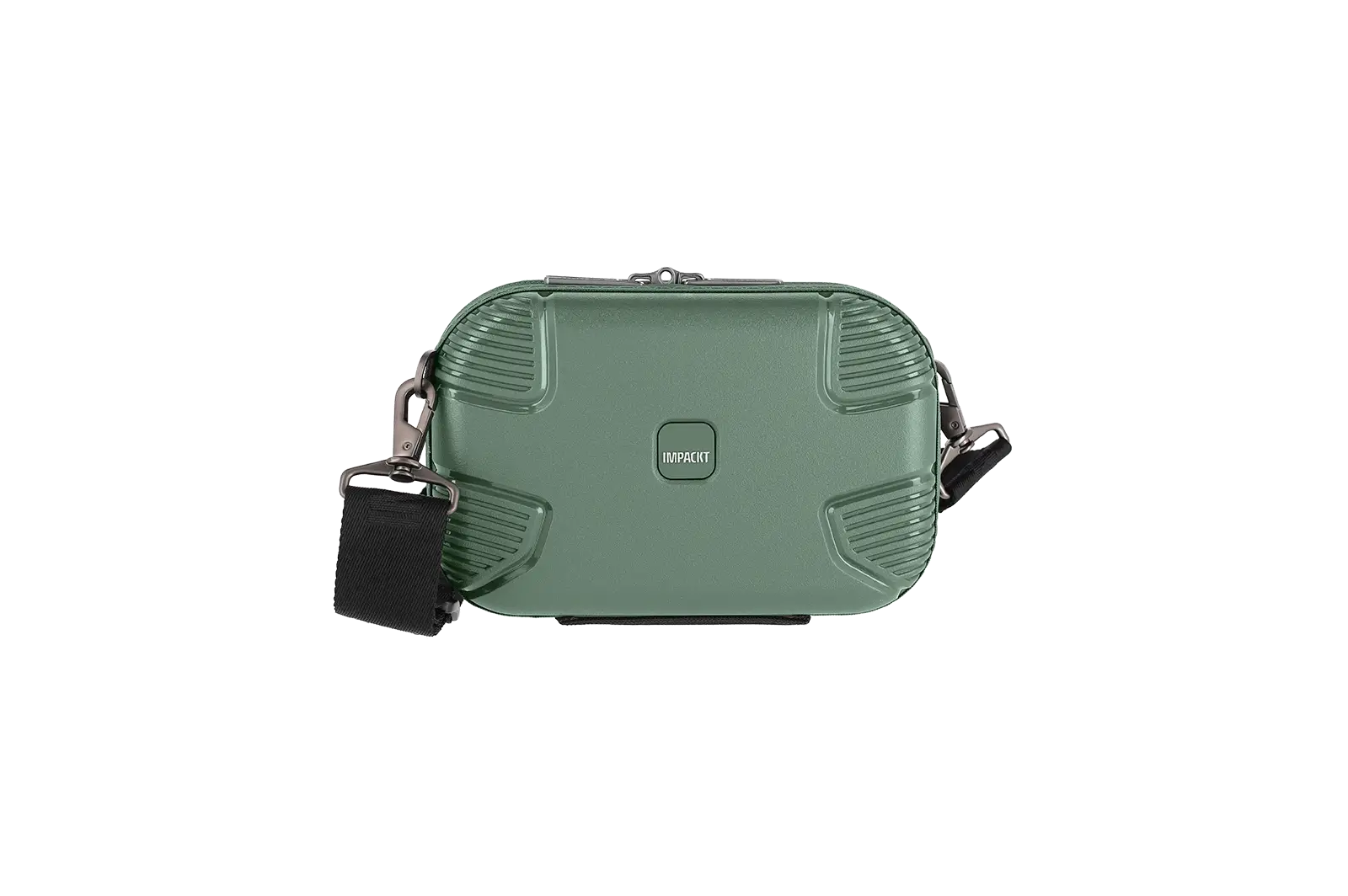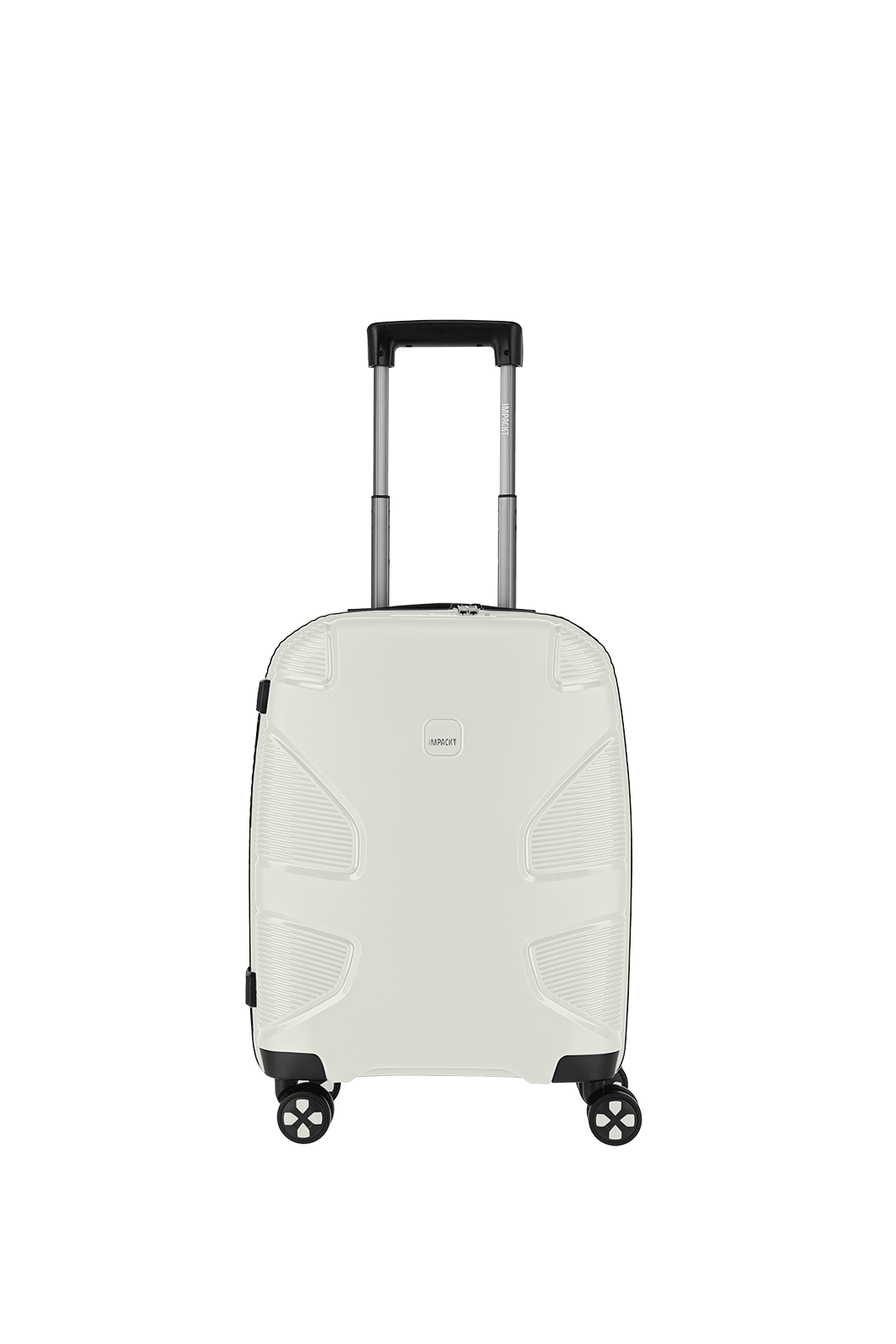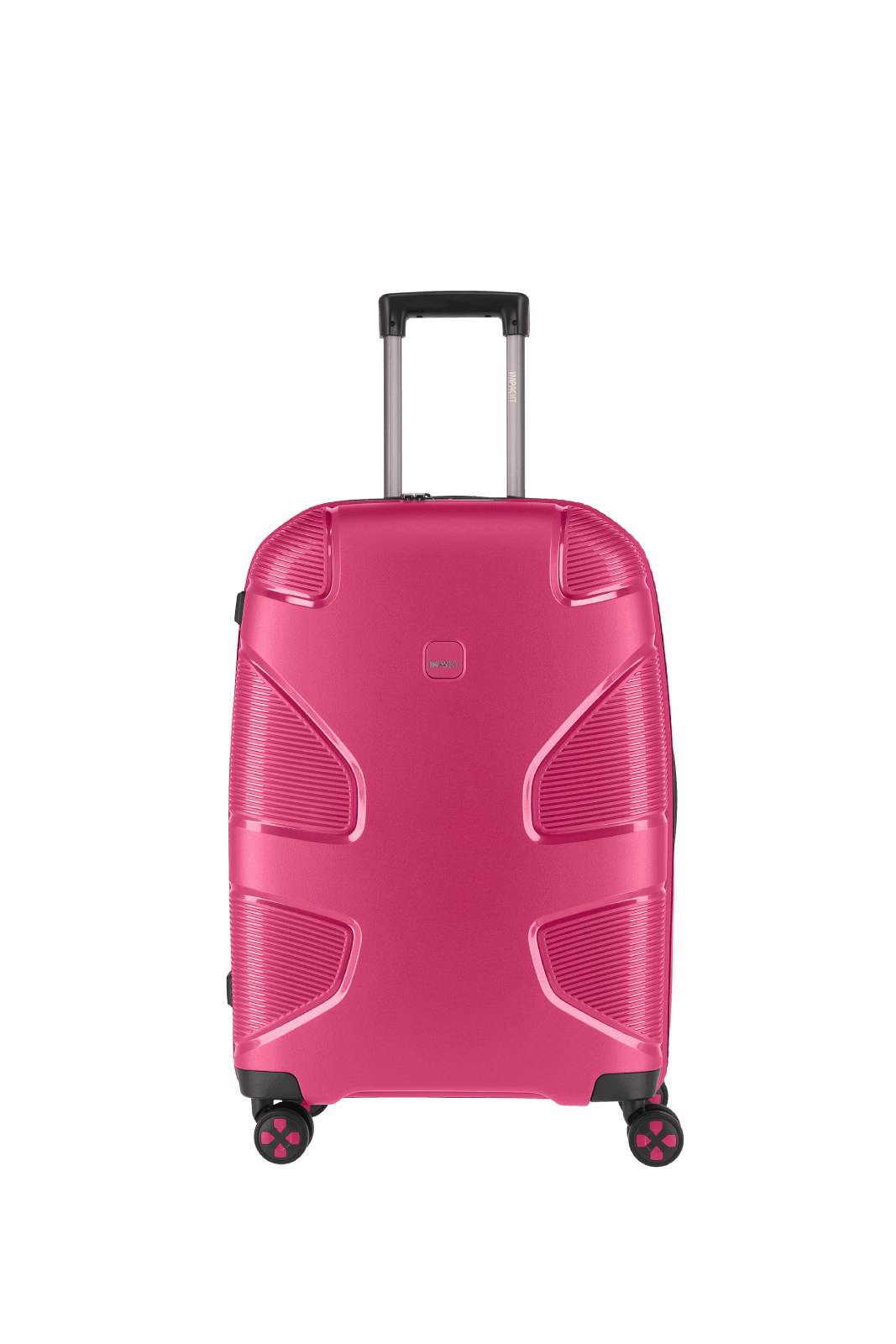The short vacation is right around the corner. Because one thing is for sure: we don't have to travel far to explore new places and leave everyday life behind.
With our tips, we take you on a city trip through Germany - to five places that are spread across the country. We recommend sustainable travel destinations and tell you what you should not miss. So let's go on a city trip.
Sure, many cities in Germany are worth a trip. And the Baltic and North Seas are also among our 2023 travel trends, but we've taken a look at the cities that are particularly sustainable.
This way, your city break in Germany will not only be a great memory, but will also have a positive IMPACKT on our environment.
Our first city trip in Germany takes us to the south. Already in 2010 Freiburg gets the official title of the „
Federal Capital in Climate Protection“. This is due to many different factors, which together result in a holistic, environmentally conscious concept, which is not only promoted by politics, but also lived by all inhabitants.
One thing that stands out during our city trip is that many people ride bicycles. There are many restaurants for vegetarians and vegans. And it is sunny. In fact, Freiburg is one of the cities with the most hours of sunshine - an advantage for vacationers, and for our environment. Freiburg harnesses the power of the sun and produces 14 million KWh of solar power annually. The city declared its phase-out of nuclear energy as early as 1986. (Source: Federal Institute for Urban Research)
What is also striking: the proximity to nature. 82% of the city is green space, you can hike directly to the Schlossberg and to the Feldberg - in the middle of the Black Forest - you only travel about an hour by bus.
In general, we are surprised how short the distances are in Freiburg. We stroll through the uniquely beautiful old town along the cute brooks that flow through the alleyways, cross the weekly market right by the Freiburg Cathedral (sampling all the regional goodies), check out the historic department store, visit the Augustiner Museum, and finally stop at the Schwabentor. All the sights are within easy walking distance. By the way, this is not a coincidence. It is the result of Freiburg's sustainable urban planning. The idea: Shorter distances = less CO2.
Our hotel tip: Das Green City Hotel Vauban. Our event tip: Every year, Baden-Württemberg hosts the "Sustainability Days", during which environmentally conscious actions are made understandable and tangible through exciting activities. In 2023, these days will take place from September 22 to 25.
#2 Rostock
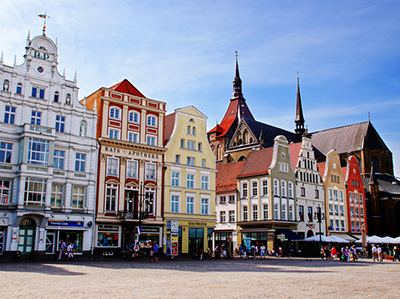
Our next city trip in Germany brings us back to the north. To the Baltic Sea. To Rostock. Here, you can always feel a fresh sea breeze on your skin, smell the sea and really take a deep breath.
In the city center, we are fascinated by the city hall, which was built in the 13th century. It is located right in the center, so we start a small tour of the Hanseatic city from here. We take a look at the Stone Gate, stroll through Kröpliner Street and can't get enough of the sight of the old houses, which reflect the Hanseatic prosperity and the different style epochs. Rarely have we seen such well-preserved baroque houses.
During our little tour, we keep stopping at small stores that we discovered beforehand on "Rostock Nachhaltig". This is an initiative that offers a platform to local stores and restaurants that focus on fairness and sustainability. The guide goes hand in hand with the fact that Rostock has been a Fairtrade city since 2012.
A culinary highlight awaits us on the second day in Warnemünde. At "Warneforniern" we enjoy homemade vegan apple pie, juicy cherry-walnut brownies and coffee from organic cultivation. We have really earned this refreshment. We rode our bikes from Rostock to Warnemünde - along the "Alter Strom" and the beach promenade with the lighthouse. You need to be in a bit of shape for the tour, but the view is well worth it. And the cake tastes twice as good.
By the way, bicycle fans should also plan a tour to the nature reserve of the Rostock Heath. You can rent bikes easily through ListNRide.
#3 Dresden
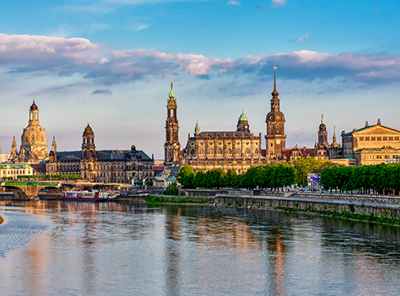
Dresden is one of the top destinations when it comes to city breaks in Germany. Here you'll experience art, architecture, history, a great view of the Elbe River - and yes, sustainability too. According to ClubMed, Dresden is the second most sustainable vacation spot after Freiburg. There are super many bike routes, the inhabitants save the most water in Germany and you can find the Fairtrade seal in more than 100 small stores and stores.
The most famous sights are the Frauenkirche, the Zwinger, the Semperoper, the Brühlsche Terrasse, the Fürstenzug, the Residenzschloss and the Katholische Hofkirche. Most of the buildings are inspired by the Dresden Baroque. Their facades are historical unique pieces with magnificent ornaments. Our city trip to Dresden is directly also a journey through time.
A bit away from the hustle and bustle we discover our absolute highlight: Pfund's dairy - the "most beautiful dairy store in the world". With splendidly painted tiles on the walls and ceilings from 1891, our stomachs growl at the sight of the cheese counter. Let's go to Steffenhagen and probably the best vegan schnitzel in the world. You like it rather sweet? Then come and enjoy cakes and tartes in the café of the organic confectionery "Hellers Caféglocke". Both places are extremely popular - that's why we recommend you to book a table in advance.
As we did in Rostock, we'll get on our bikes in Dresden. This is particularly easy in the Saxon city with MOBIbike - the Dresden public transport company's own bikesharing service. Also handy: The Elbe Cycle Path runs along both sides of the river. So you can cycle there on one side and back again on the other.
And another tip from us for the summer: the film nights on the banks of the Elbe. Here you can enjoy classic films under the open sky with a view of the old town.
#4 Erfurt
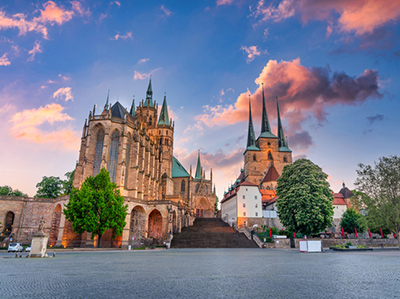
We travel further through Germany. But not that far. Only 220 kilometers to the west. And arrive in Erfurt. Here, sustainable thinking has a long tradition. As early as 1998, sustainable urban development was initiated with numerous projects.
However, one of the city's landmarks is even older. In 1468, the Krämerbrücke was completed. It is the longest bridge in Europe that is continuously built with 62 half-timbered houses. Only in Florence is there anything like it. Accordingly, this place is also popular.
We find peace a bit behind the Krämerbrücke - in the direction of the Augustiner. Here we grab an ice cream made from natural ingredients from the ice cream shop and let our feet dangle in the Gera. Slow Traveling is and remains for us simply the most beautiful way to travel.
We deliberately set off for the next sights: the cathedral, St. Severi's Church and the town hall. There is a lot of medieval charm in the air here. We can hardly believe that the cathedral is supposed to date back to the 8th century.
By the way, did you know that Erfurt is also called the city of flowers? On the one hand, this is due to the many parks and green spaces, but on the other hand, it is also due to the "Egapark". The first garden show took place here in 1950. To this day, a wide variety of flowers, trees and shrubs blossom on the 36 hectares - a must-see for plant lovers.
If you want to marvel at the beauty of the city in all its glory, be sure to climb the Ägidienkirche. Over creaking steps it goes high up - so that before you a panoramic view of all sights opens up. You can even look down on the Krämerbrücke from here.
#5 Saarbrücken
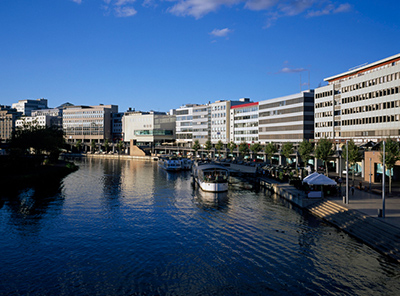
Our city break in Germany is coming to an end. We continue by train across the country - to a corner we haven't been to yet. Namely to Saarbrücken. The city is also one of the top 10 most sustainable vacation spots in Germany. Mainly because it has the clearest air, the most sustainable water consumption and lots of green space. (Source: ClubMed)
We discover the city completely on foot. After all, that's totally doable given its size. We like the hip Nauwieser quarter best. Between the pretty old buildings, you can relax and look into the windows of the small stores, most of which specialize in the production of sustainable, local products. The "consumer-critical tours" are also particularly exciting here. On these guided tours, you'll visit various places that facilitate alternative consumption in Saarbrücken and learn how to make more conscious choices. You can find more info and dates here.
In addition to the lively cultural scene, we also like the baroque architecture and French flair in the center of Saarbrücken during our city trip. You should definitely take a look at the castle, the town hall including the market square and the St. Johann town hall.
You want to go out into nature? No problem. Directly in front of the city gates lies the Saarbrücken primeval forest. Since 2002, the enchanted forest has been developing entirely without human intervention, showing what it's like when we leave nature to its own devices. One highlight: the dangling stations. You grab a hammock, make yourself comfortable in the middle of the forest and let all the animal, plant and mushroom species take effect on you.
City trips Germany: Our sustainable tips
It's often the little things - like digital tickets - that can help us travel more environmentally conscious. We've collected five tips to make city breaks in Germany more sustainable:
1. pack your suitcase:: If you're only traveling for a few days, it's a good idea to travel with a small trolley. This is not only easier for you, but also saves CO2. In addition, you get in the mood for conscious traveling and don't have the stress of not finding a place for your suitcase on the train. We therefore love to travel with our hand luggage suitcase IP1 in size S.
2. eco-hotel: Sometimes it's not so easy to find a sustainable accommodation. You can learn more about the features of organic hotels in our blog.
3. travel consciously: Slow Traveling is not just a trend. It's your chance to create lasting memories of your vacation. Take breaks on your city break in Germany, look around consciously, don't stress yourself out. The more you slow down, the more you will get out of your trip. We recommend that you plan about four days per city trip. On the first day you arrive by train, on the second and third day you have enough time to explore and on the fourth day you leave after a typical regional breakfast.
4. e-tickets: Whether for the train, the bus, the museum or the theater - simply have your tickets sent to your cell phone and save them. This way you don't have to print anything out and save resources.
5. avoid waste: Zero waste starts with packing. Take reusable containers for snacks, a burlap bag for shopping and your water bottle for refilling. You can find a whole Zero Waste packing list here.
Wish you knew where to refill your water bottle for free? No problem. That's what the Refill app was designed for. The smartphone application is one of our top 5 sustainability apps. Here we introduce you to all five:
Sustainable travel: Travel greener with these apps
When planning your sustainable city trip in Germany, different apps can help you. After all, it's not just about visiting eco-cities, but making your whole trip as green as possible - and in the easiest way possible.
These five apps are perfect for your green city trip:
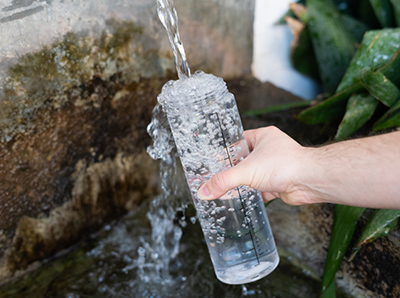
1. Omio: Within Germany, it's easy to travel by train. Omio makes it even easier. In the app, you can compare all possible connections and book the ticket that suits you. You save resources with the digital ticket. You save CO2 when you travel completely by train.
2. Co2mpensio: If you can't travel 100% of your route by train - which saves 80% CO2 compared to flying - you can use co2mpensio to compensate for the emissions you have caused by car, for example. The app calculates how many trees need to be planted to compensate for the distance traveled and calculates the corresponding amount, which you can easily pay via credit card or PayPal. (More tips on CO2 offsetting can be found here).
3. FairTrip: Your city trip in Germany will be especially sustainable if you visit environmentally conscious restaurants and accommodations that promote social tourism - and that's exactly what FairTrip was made for. The app helps you find fair places and support locals.
4. Happy Cow: Vegetarian and vegan diets are not just a trend. Meatless diets are also good for the environment. For comparison, for every kilogram of beef sold in Germany, about 13.6 kilos of CO2 are produced. Lentils, which are an important source of vegetable protein, cause only 1.5 kilos of CO2 per kilo (source: ifeu). The "Happy Cow" app shows you all vegan and vegetarian restaurants. You can also find non-packaging stores and sustainable markets.
5. Refill: To avoid waste on your city trip, you can take your own refillable water bottle with you. With the app "ReFill" you can then check where you can refill your water bottle with fresh water for free. This way, you're not only focusing on zero waste, but you're also spending zero money.
Now nothing stands in the way of your sustainable city trip in Germany.
